How Has Dance Changed In The New Millennium
Michael Afonso // Unsplash
50 famous dance fads from the last 100 years
Trip the light fantastic fads are probably as old every bit trip the light fantastic toe itself, merely the concluding century has produced amazing technological developments that accept helped modernistic dance crazes spread worldwide faster and farther than ever before. From television and film to social media and viral videos, the dance fads that dominated the concluding 100 years have hitched a ride on technology's back to spread like wildfire across all generations, nationalities, and backgrounds.
Some reached global prominence before disappearing in a few short months or weeks, while others endured through the decades and proceed to be reinvented today. Some were groundbreaking cultural revolutions that were the production of of import and transformative arts scenes. Others were painfully tacky and curt-lived trends that were mercifully limited to a specific time and identify. Some dance fads have simmered in underground scenes for years before existence introduced to the mainstream masses past giants like Chubby Checker and Madonna. Others were completely unknown before a single person, group, song, or video made them instant sensations.
Trip the light fantastic fads have spawned entire new genres, influenced film and music, challenged social norms and traditions, horrified genteel society, and thrilled young people. They were built-in in jazz clubs and ballrooms in Chicago, urban trip the light fantastic parties in Memphis, Tenn., country-Western confined in the South and Midwest, underground elevate clubs in New York Urban center, and at inner-metropolis contests in South Central Los Angeles.
Here's a look at the l most significant trip the light fantastic fads of the final century, how they got started, what influenced their arrival, and what futurity movements they would inspire. Some you may know, some you may take known just forgotten, and others you may wish you could forget. Either way, every single one of them at i point or another compelled the masses to shake, twist, rattle, scroll, swing, bump, or salsa.
You may also like:Pop fads from the year yous were born
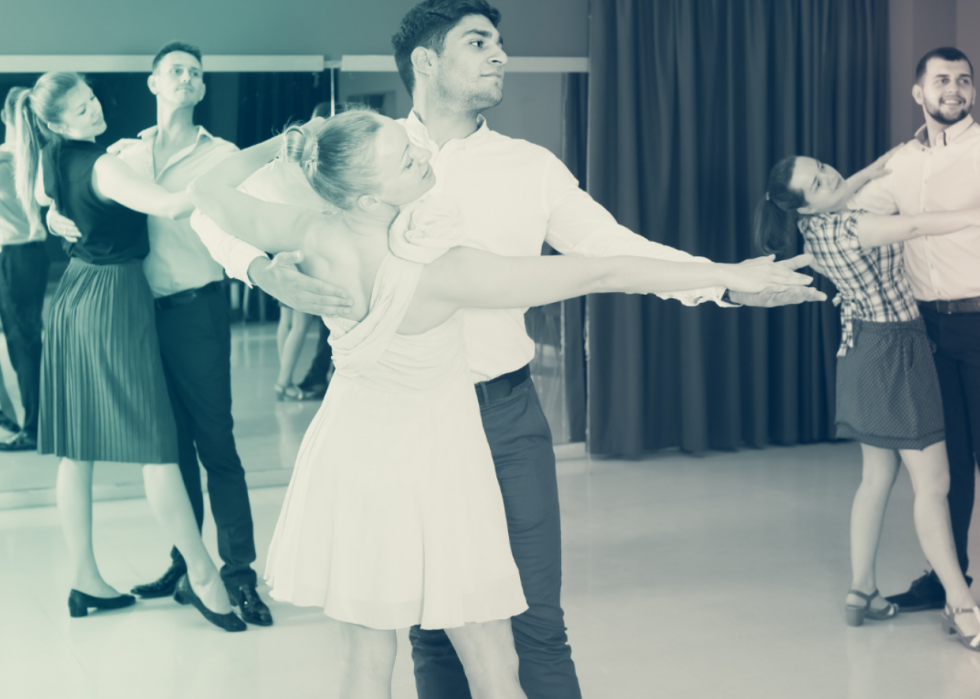
1 / 50
lakov Filimonov // Shutterstock
The Foxtrot
Although it was get-go developed in 1914, the foxtrot entered its heyday right around a century agone at the tail end of the 1910s. The trip the light fantastic is credited to and named after Harry Fox, a Vaudeville actor who doubled every bit a circus performer and professional baseball player. Known for its deadening-slow, quick-quick counts, the dance was originally called Fox's Trot.
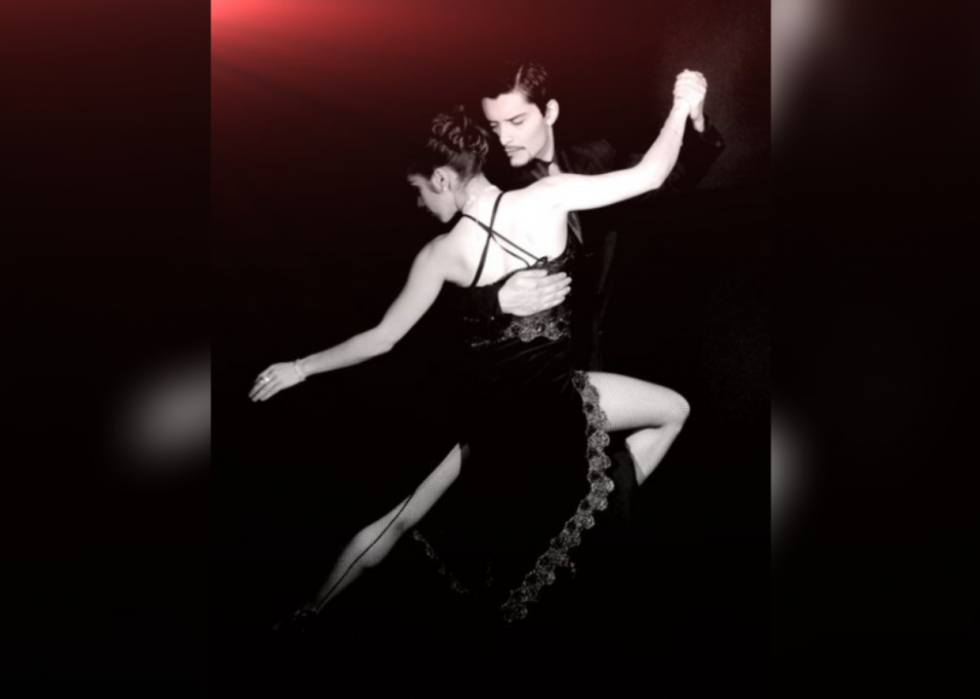
2 / l
carlos luque // Wikimedia Commons
The Tango
The tango remains one of the nearly famous, most recognizable, and almost taught dances in the world. Although the tango has roots in pre-America, old-world Europe, it emerged in the 1800s every bit a solo dance performed but by women. Its modern version came to New York Urban center in the early on 1900s, but information technology offset became a bona fide craze in 1921 when Rudolph Valentino made information technology a striking.
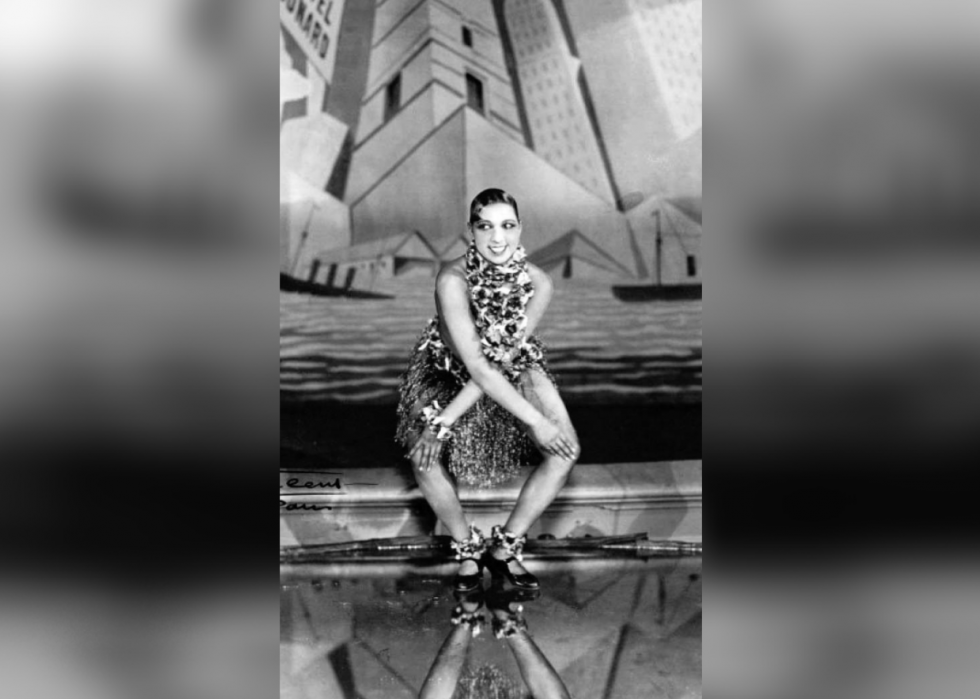
iii / 50
Walery // Wikimedia Commons
The Charleston
1 of the starting time dances to emerge from the era that would come to be known as the Roaring '20s was named after the town where information technology was created: Charleston, S.C. The then-scandalous dance was a local hit for years, but the Charleston rose to national prominence when James P. Johnson composed the song "The Charleston" for the striking 1923 Broadway show "Runnin' Wild." The dance became a symbol of flapper culture—the term "flapper" comes from the Charleston's trademark loose arm and leg flapping.
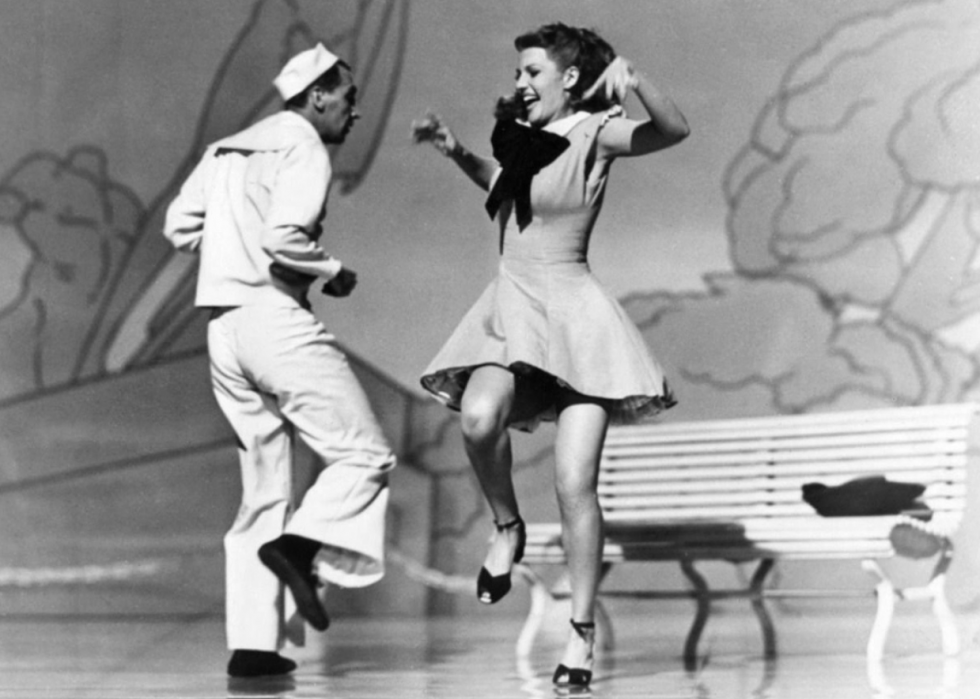
4 / 50
Time Inc/Columbia Pictures // Wikimedia Commons
The Lindy Hop
In the 1920s, a new and game-changing trip the light fantastic toe chosen the Lindy Hop emerged out of New York City'south African American urban arts motion. The trip the light fantastic, which combines traditional African rhythms with structured European steps, was born at Harlem's iconic Savoy Ballroom, an epicenter of culture and a thousand ballroom with a coat check that could accommodate 5,000 patrons. The wild, spontaneous, eight- and half-dozen-count trip the light fantastic toe, which is a precursor to swing that borrowed from the Charleston, was among the starting time cultural phenomenons to challenge racial segregation during the emerging jazz era.
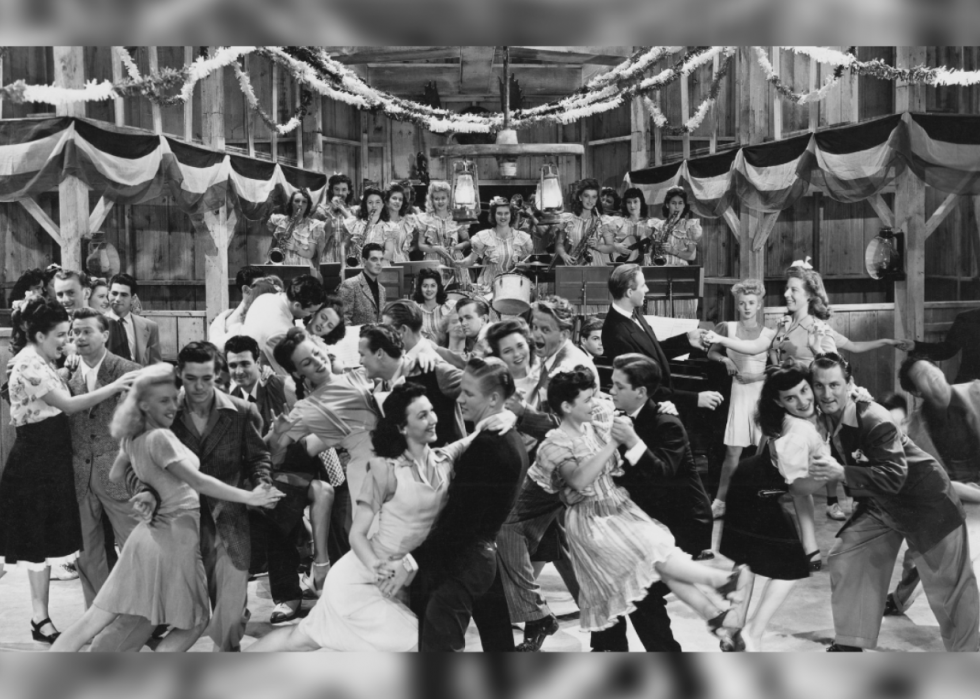
5 / 50
Everett Collection // Shutterstock
Swing dancing
Swing dancing is withal associated with Benny Goodman, Duke Ellington, Count Basie, and other big-ring acts that rose to prominence during the jazz era of the 1920s. It was most heavily influenced, however, by the Lindy Hop, a freewheeling dance unlike any that had come before. Swing used the Lindy Hop as a foundation, only jazzed information technology up fifty-fifty more by calculation lifts, flips, airwalks, and other death-defying aerials. It continues to evolve and remain popular to this very day.
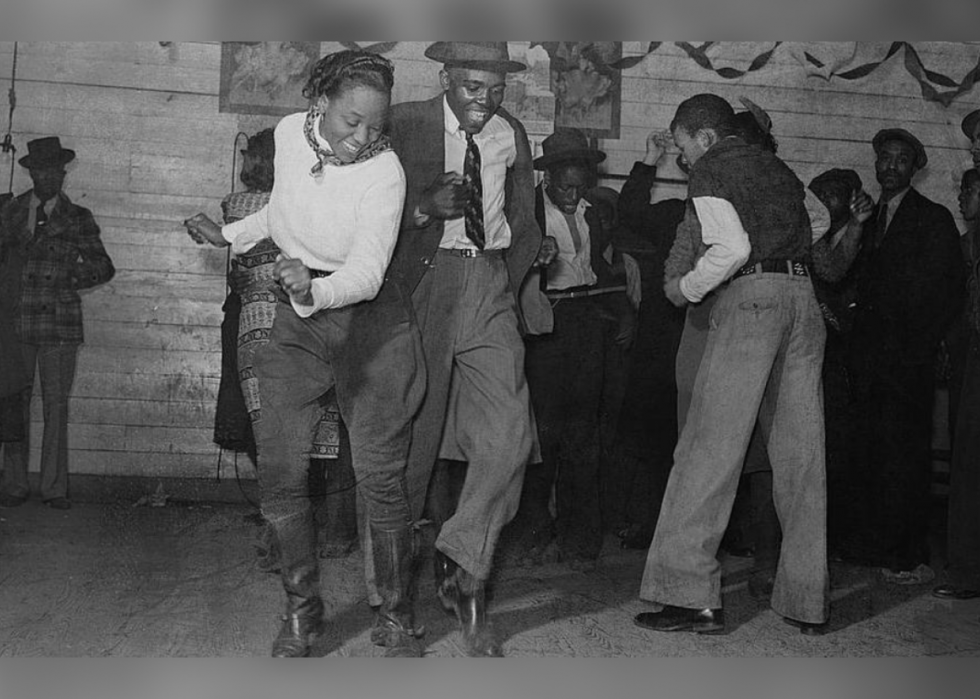
6 / 50
Marion Post Wolcott // Wikimedia Commons
The Jitterbug
In the 1930s, the Jitterbug emerged as a spin-off of both swing dancing and the Lindy Hop. The motion picture "Cab Calloway's Jitterbug Political party" in 1935 popularized the term, but the true origins of the dance'southward name are disputed. The wild, explosive couples dance was developed in undercover African American juke joints during Prohibition.
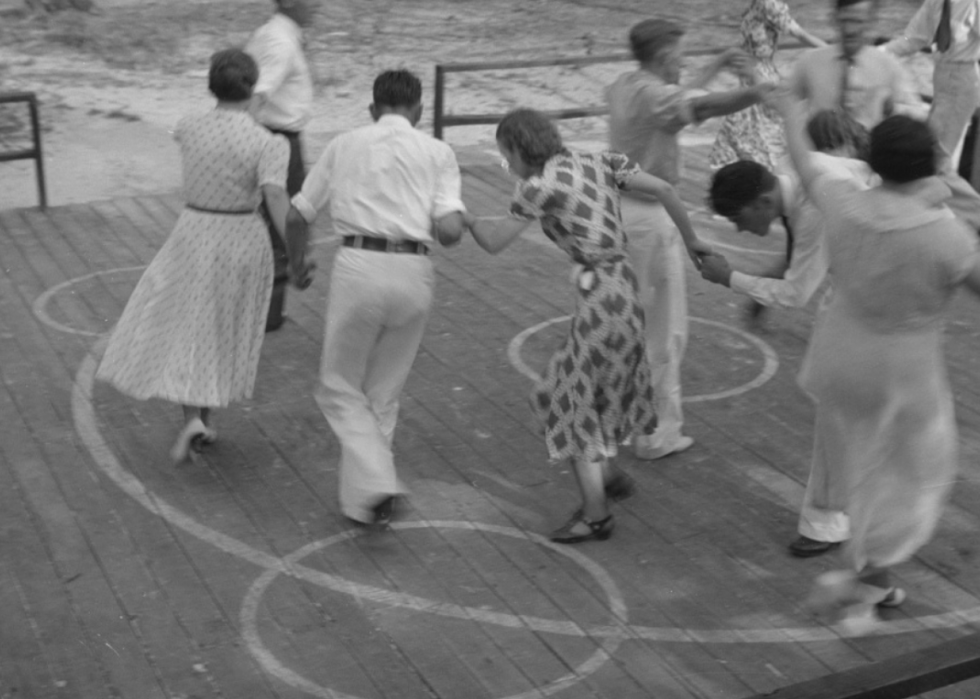
seven / 50
Library of Congress // Picryl
The Suzie Q
The Suzie Q is a and so-called companion dance that can be performed solo or every bit part of a group. A late 1930s mainstay, the simple simply lively trip the light fantastic consists of merely iv steps and requires practitioners to go on their hands low and clasped or with their fingers interlocked.
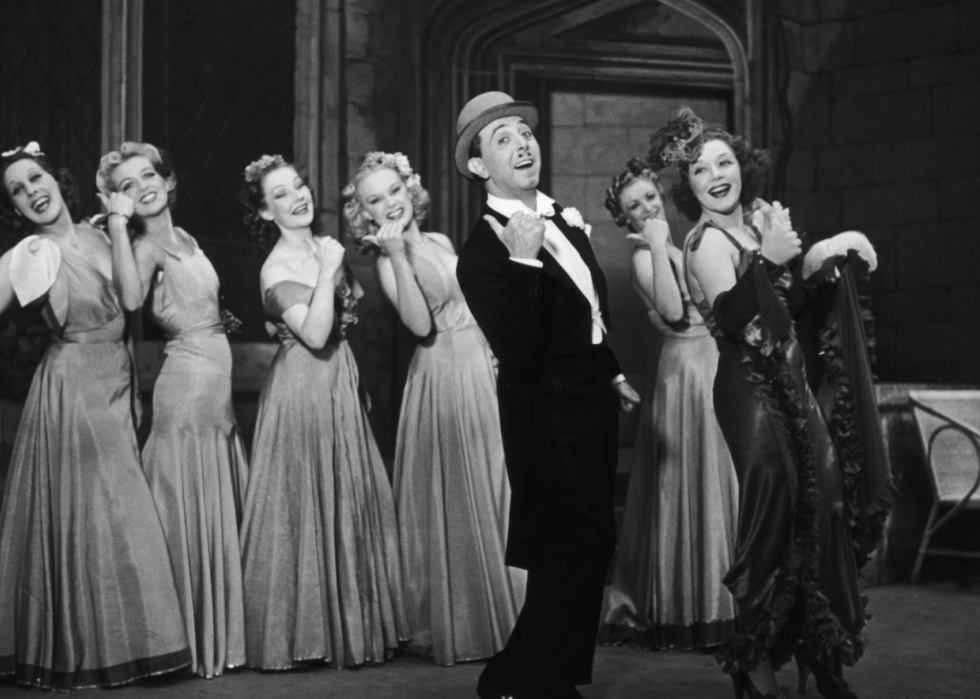
viii / 50
Baron/Hulton Archive // Getty
The Lambeth walk
The Lambeth walk is believed to have been created by either the dancer Miss England or the comedian Lupino Lane around 1936. All-time done in a group with couples dancing side by side, the trip the light fantastic emerged from a commune in London known so as Lambeth.
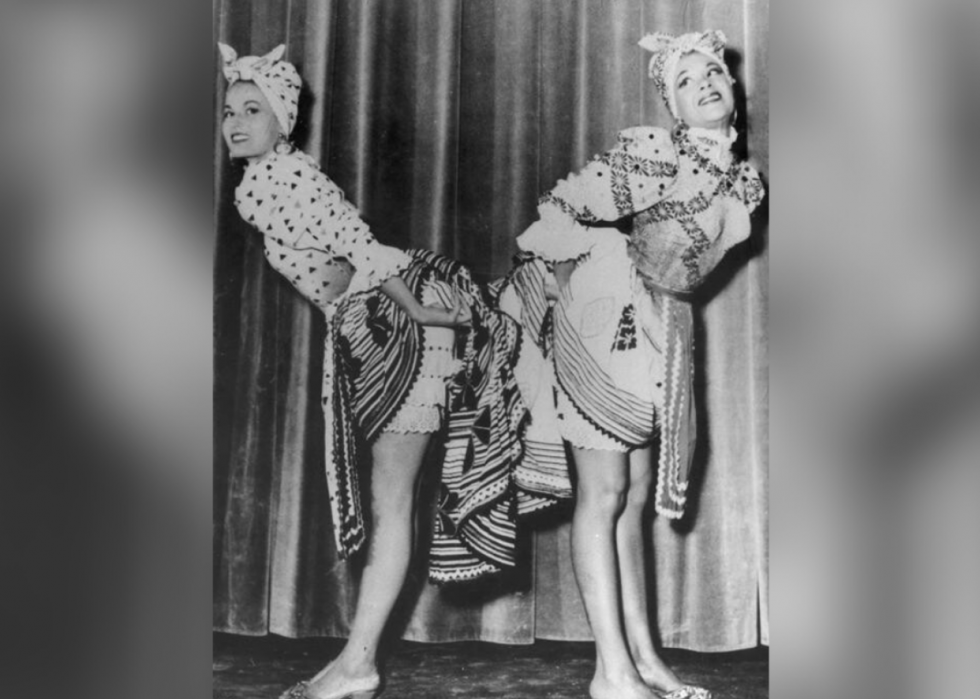
9 / 50
Library of Congress // Picryl
The Mambo
The discussion "Mambo" describes a traditional voodoo priestess in Haitian sociology. A dance by the same name originated in Cuba'southward Haitian customs, merely contrary to popular belief, the Mambo is non derived from traditional Haitian dance. The Mambo, first publicly performed by Perez Prado at Havana's La Tropicana night club in 1943, it's really a fusion of Cuban dance music and American swing/jazz dancing.
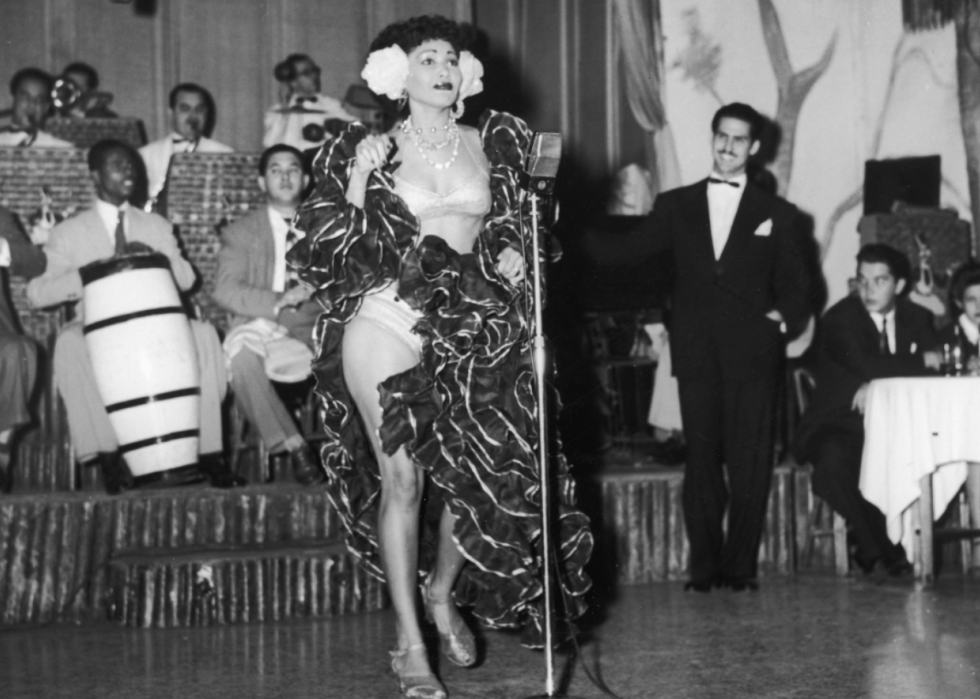
x / l
Cuban rumba
Also in Havana effectually the aforementioned time the Mambo was catching on, a new Afro-Cuban trip the light fantastic would emerge called Cuban rumba—it was completely unlike from the rumba that was trendy in the ballrooms of the United States. The trip the light fantastic toe, which was long frowned upon equally vulgar by high Cuban guild, is characterized by African drums and fast, rhythmic lyrics.
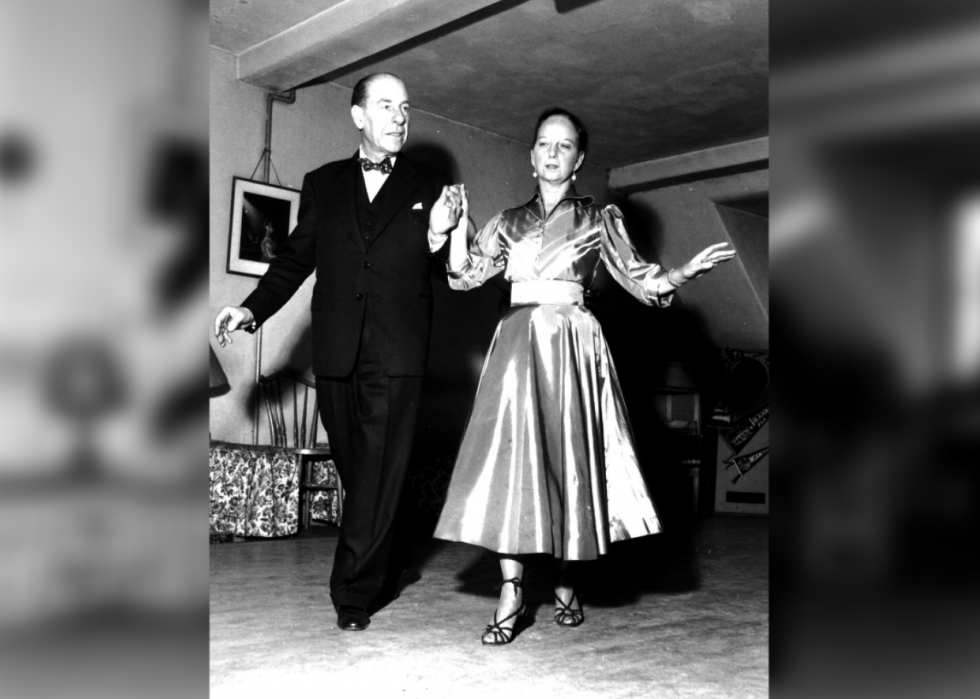
11 / fifty
Keystone Features // Getty
The Cha-cha
In 1952, an English dance teacher named Monsieur Pierre Jean Phillipe Zurcher-Margolle visited Havana and noticed that sometimes dancers performed the rumba with extra beats. When he returned to Uk, he began pedagogy these extra steps, along with music borrowed from the irksome Mambo tempo, as a separate trip the light fantastic that would come to be known as the cha-cha. Originally called the cha-cha-cha, it's performed at 120 beats per minute and is known for its weight-forward posture and strong hip movements.
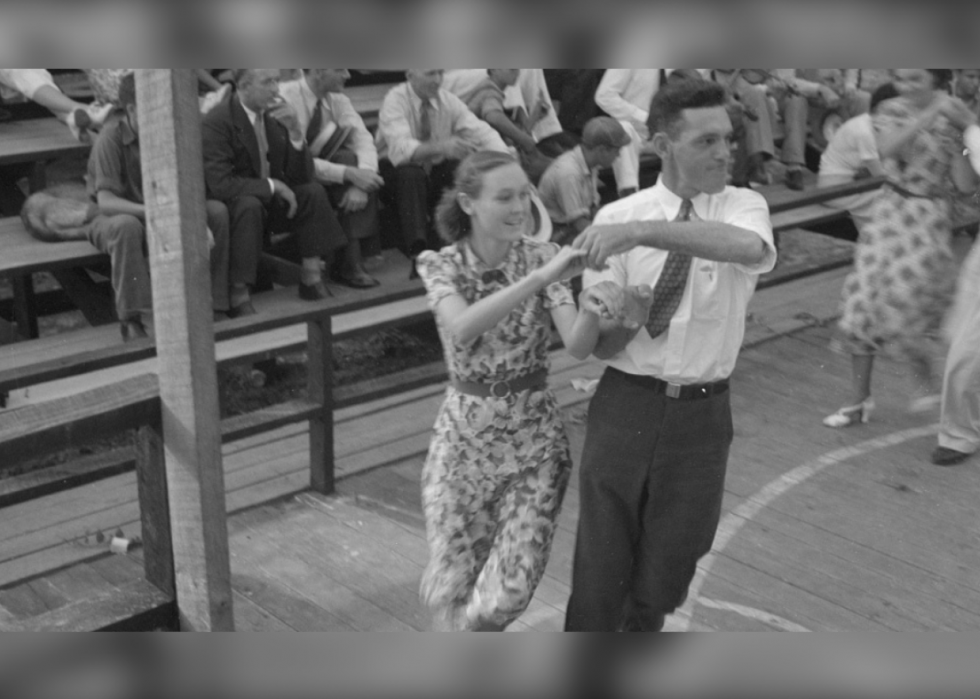
12 / 50
Library of Congress // Picryl
Foursquare dancing
Square dancing has roots dating back to England around the year 1600, merely it was Henry Ford who is credited with reviving the tradition and making it a phenomenon in the United states of america. The automaker poured resources into developing a national square dancing program, which he hoped would provide a genteel counterweight to what he saw as the lascivious trip the light fantastic movements of the flapper era. By the 1950s, national standards had been developed for the dance, and mic-toting "callers" were shouting out instructions like "promenade" and "do-si-do" in square dancing parties and competitions across the state.
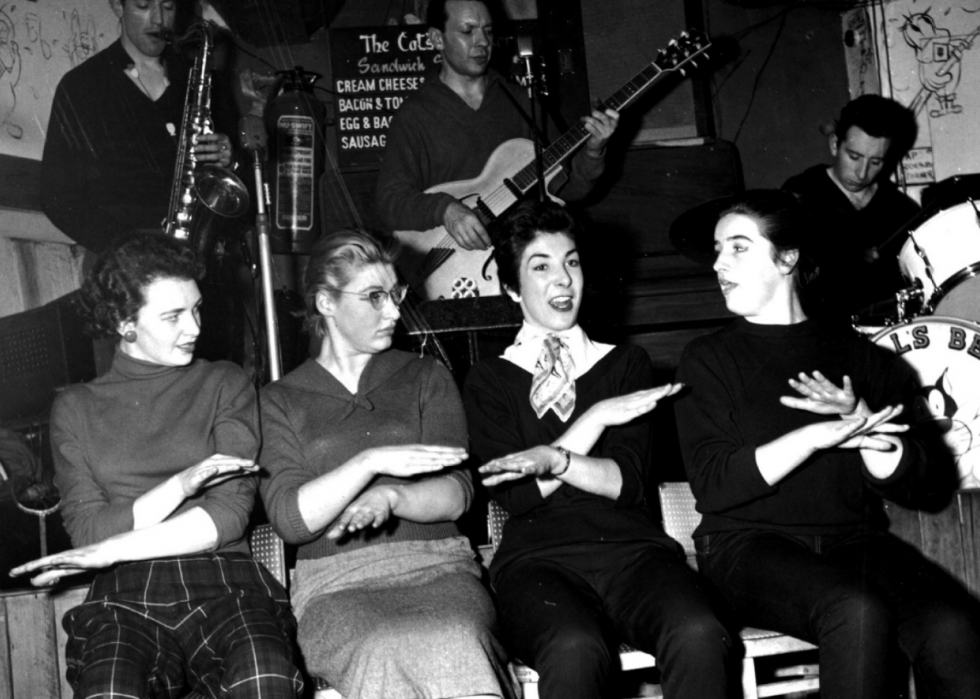
xiii / 50
The manus jive
The hand jive probably owes most of its fame to the 1978 motion-picture show "Grease," only the dance originated in the era that "Grease" was meant to portray—the 1950s. The clapping, leg slapping, and fist-rolling motions, which fabricated their tv debut in 1954 on "The Johnny Otis Show," are believed to have been developed out of necessity. The dance floors were then crowded during the early on days of rock 'n' roll that revelers had to develop a "dance" they could practice continuing still.
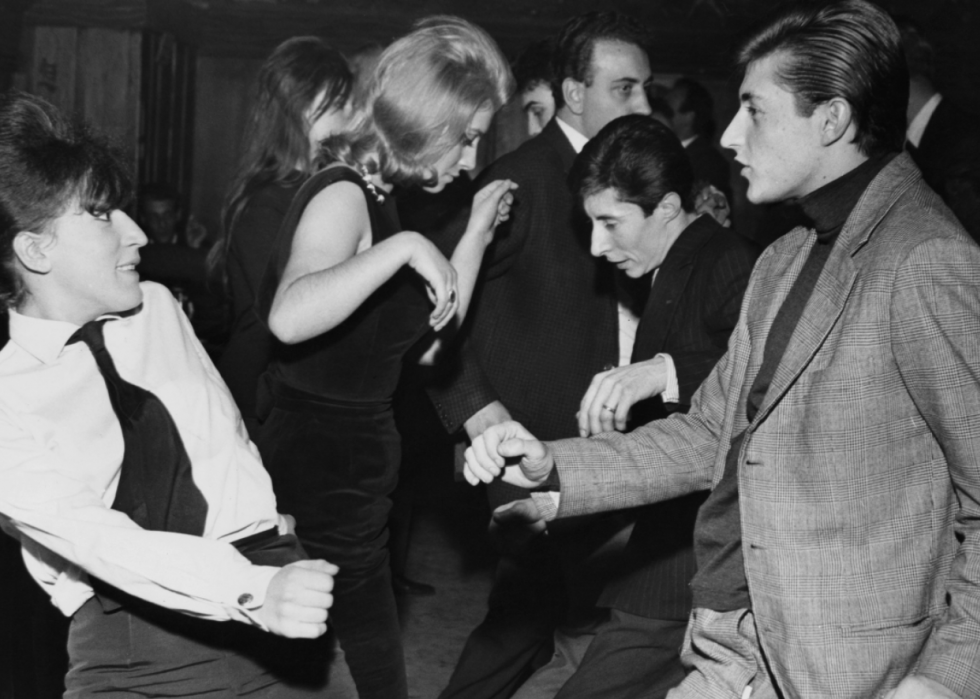
xiv / fifty
Keystone Features/Hulton Archive // Getty
The Twist
The hip-swiveling dance known as the Twist became an international sensation when Chubby Checker performed the dance while singing the song of the aforementioned name on Aug. 6, 1960, during a functioning on the "Dick Clark Evidence." The easy-to-learn dance, which became synonymous with rock 'n' curl in general, was actually invented by musician Hank Ballard, who wrote the song "The Twist" and released information technology as a single B-side in 1958.
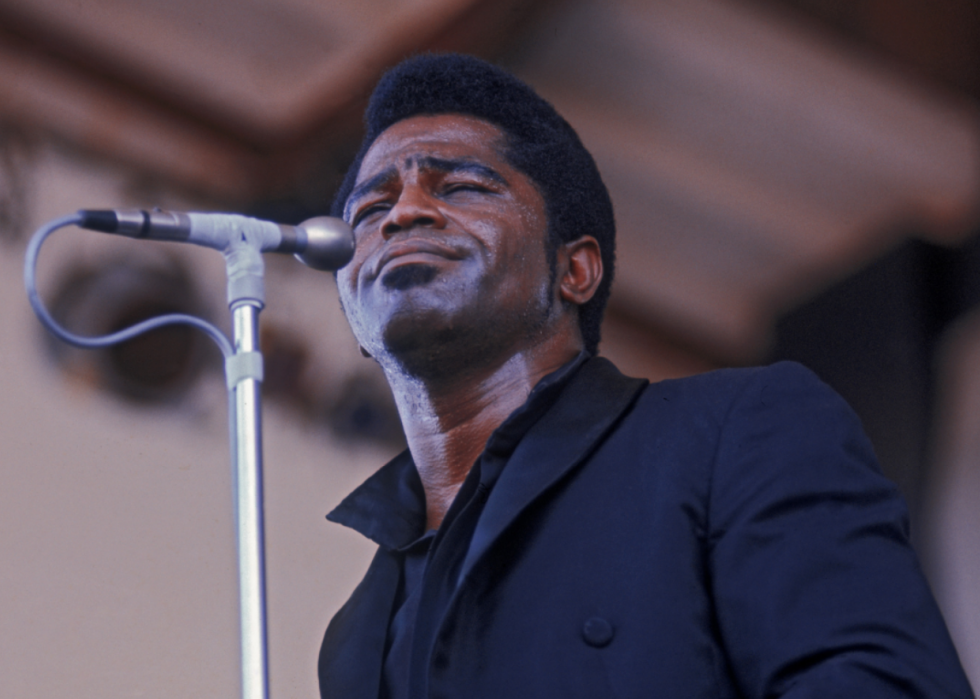
15 / 50
The Mashed Potato
The Mashed Potato became a dance sensation in 1962, although James Brownish had been performing the trip the light fantastic and its corresponding vocal at concerts as early on as 1958. Acts like Baton Thorpe and the Aztecs, Dee Dee Precipitous, and Nat Kendrick and the Swans all wrote songs around the aforementioned fourth dimension that were named for and based on the Mashed Tater.
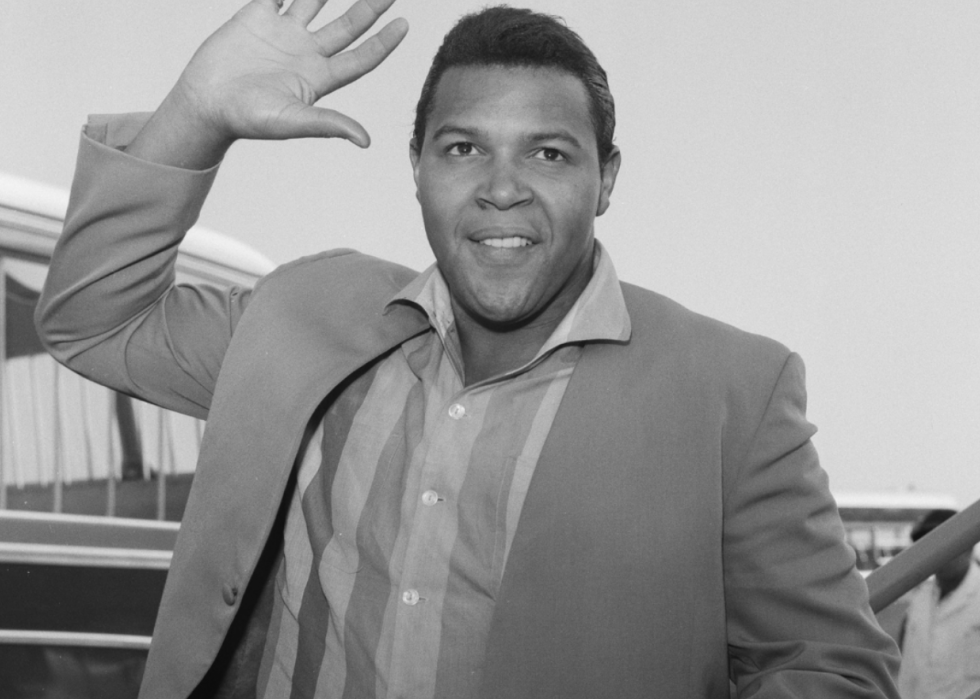
16 / fifty
Ted West/Fundamental Press/Hulton Archive // Getty
The limbo
Ane of the virtually difficult dances to come up out of the rock 'northward' roll era was the limbo, which requires participants to bend over backward while gliding forward under an ever-sinking bar. Although it originated in Trinidad during slavery, the dance became a modern fad when a man named Mike Quashie introduced the limbo at Harlem's Apollo Theater in 1958. It became a global awareness, even so, when Chubby Checker recorded "Limbo Stone" in 1962.
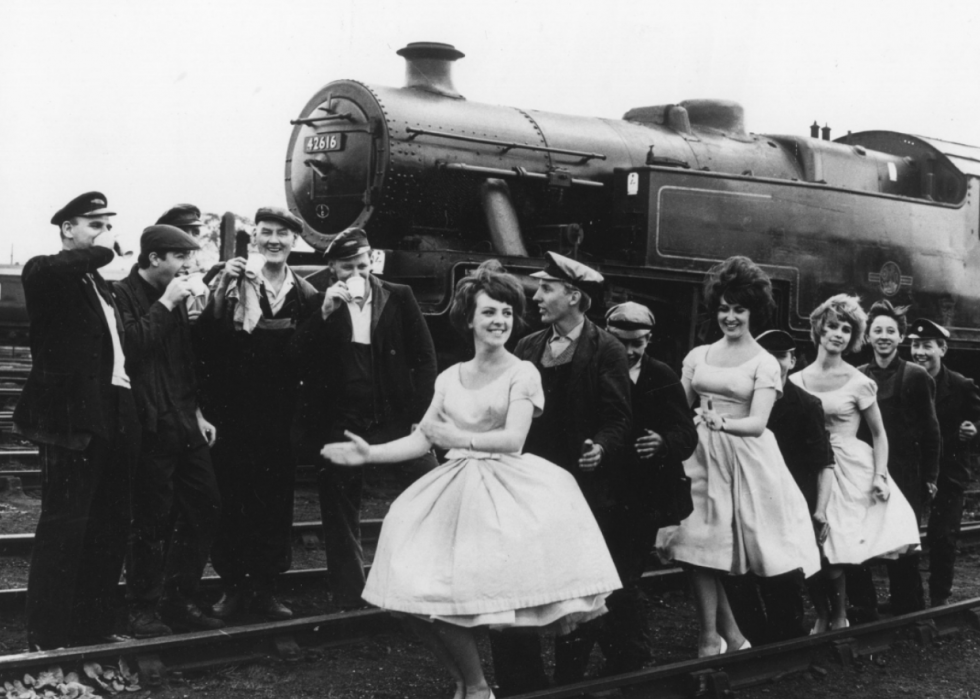
17 / 50
Evening Standard // Getty
The Loco-Movement
In 1962, Carole King and Gerry Goffin released the smash hit dance song "Loco-Motility," which would go on to make it into the American top five three times in three different decades. Function of a genre known as trip the light fantastic toe-vocal, much of the song'due south lyrics were defended to providing instructions on how and when to perform the moves.
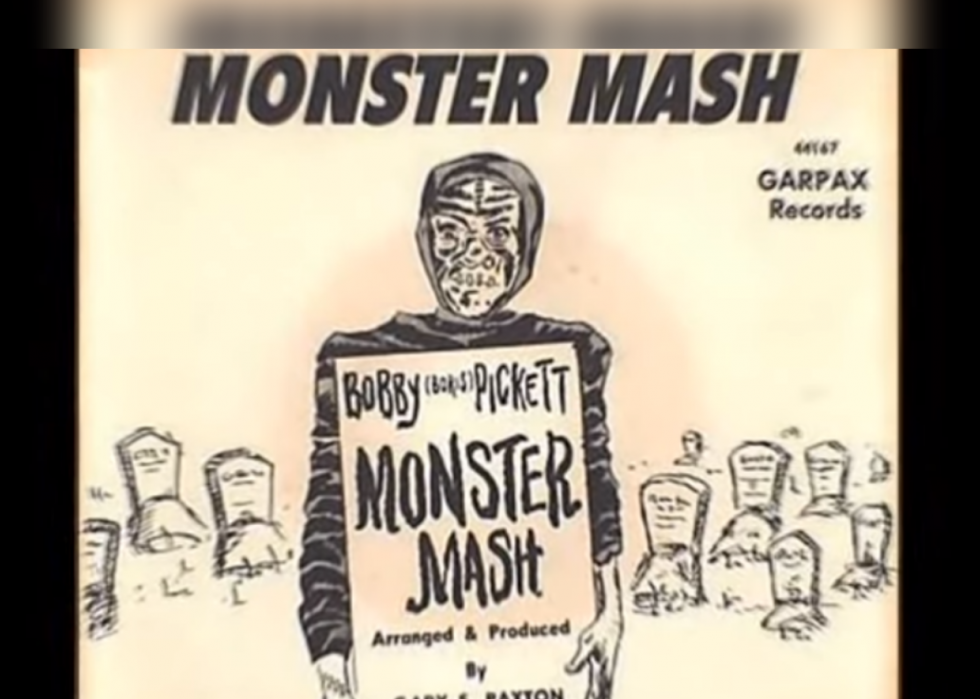
18 / 50
The Monster Mash
Bobby "Boris" Pickett lays claim to what is probably the only Halloween song most Americans tin name offhand. Pickett released "Monster Mash" in 1962, and the accompanying trip the light fantastic, oft called simply the Brew, became an instant hit at costume parties everywhere in part for its simplicity. It contains very footling footwork and requires only minimal arm movements.
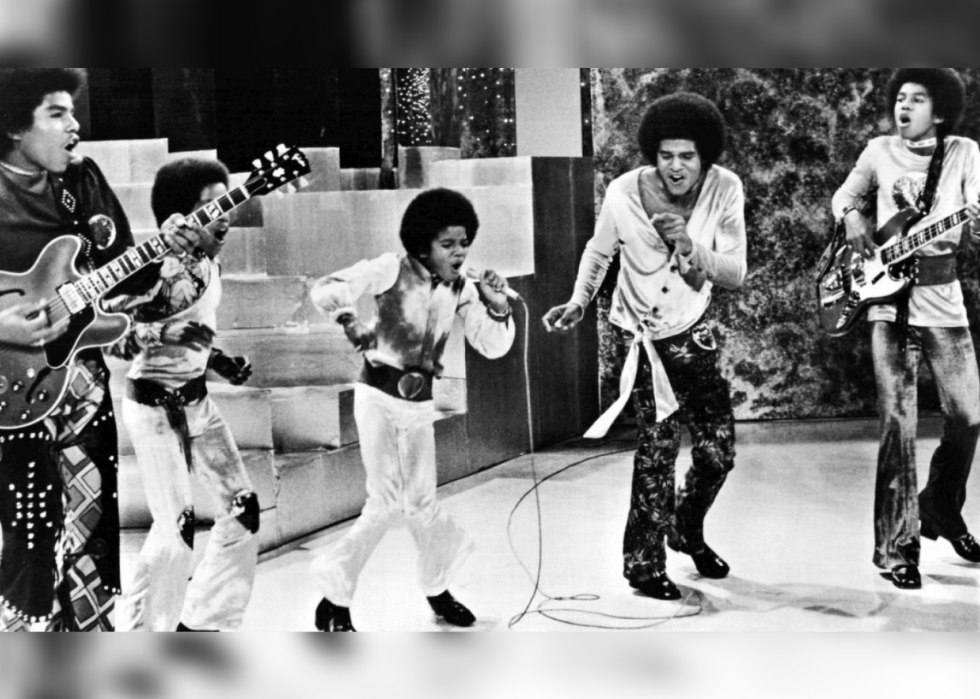
nineteen / l
ABC Television // Wikimedia Commons
The robot
Referred to by Vox as "the greatest novelty trip the light fantastic of all time," the robot began in 1967 when a mime named Robert Shields began adding mechanical gestures to his silent act. The moves—which are anything but mechanical when done right—inspired dancer Charles Washington and presently found its style onto "Soul Train" and into the Jackson 5's 1974 striking "Dancing Machine."
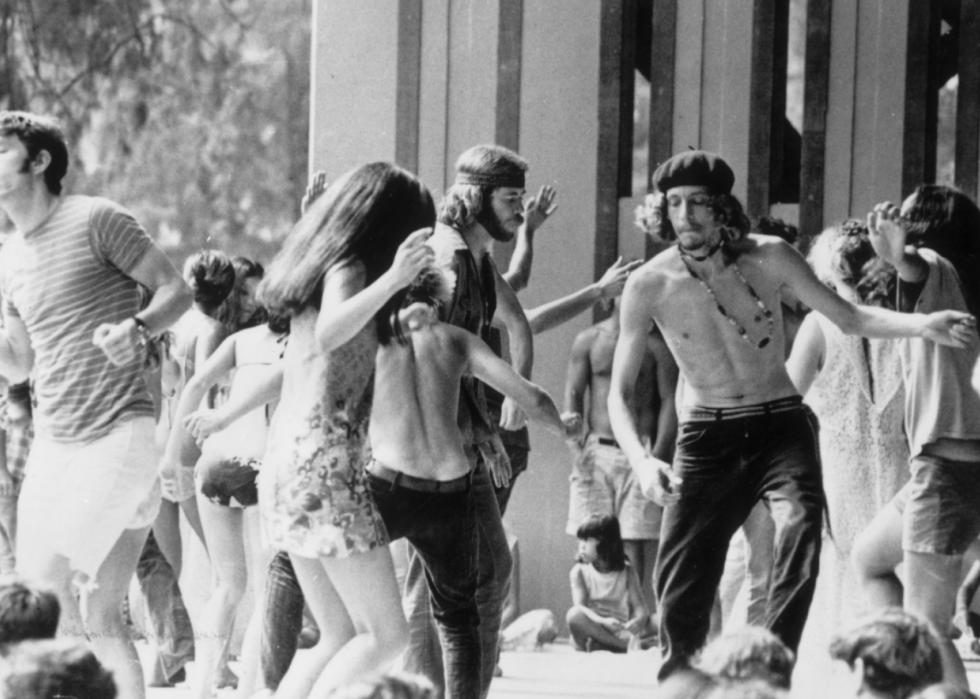
twenty / 50
John Titchen/Three Lions // Getty
The hippie spin
Born at 1960s music festivals similar Woodstock and fabricated famous by the legions of Grateful Expressionless fans known as Deadheads, the hippie spin, or hippie twirl is a trip the light fantastic toe that is still common at jam band concerts today. Hippies, often fueled by the same psychedelic drugs equally the musicians playing the music that inspired the trip the light fantastic, would twirl in a slow, vertigo-inducing tornado movement that was often accompanied by flailing arms.
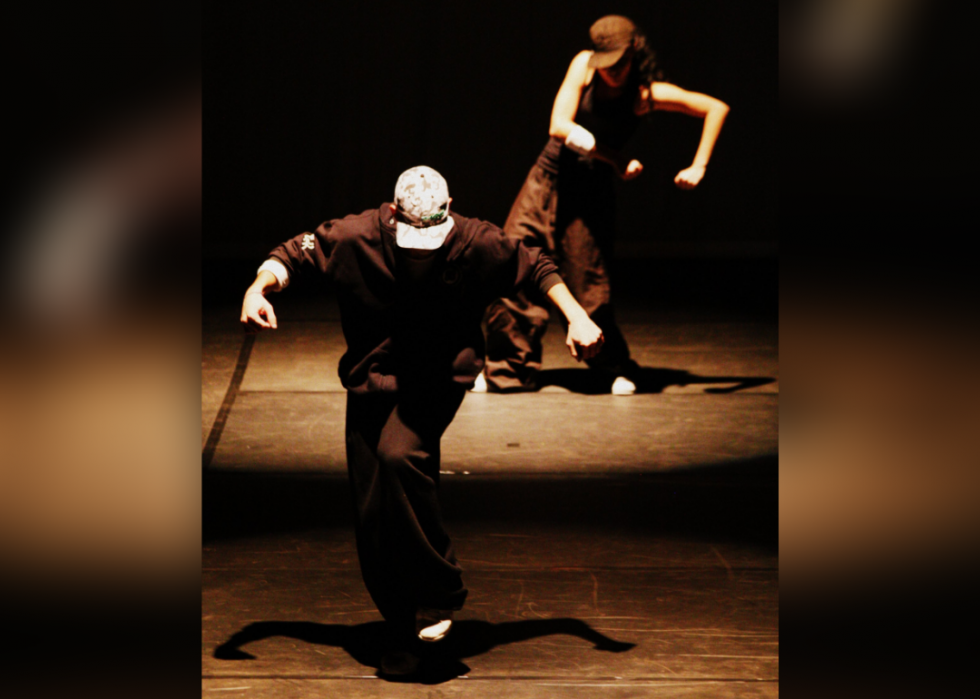
21 / fifty
Eduardo de São Paulo // Wikimedia Commons
Popping
Popping emerged in Fresno, Calif., in the early 1970s as one of the near distinct moves of early funk, and afterward, of hip-hop. The dance involves the harsh wrinkle of muscles followed by relaxation, which is then followed once more by contraction. The sequence makes the trunk announced to jerk or pop and is considered one of the earliest dance moves in the funk genre before it was adopted past hip-hop dancers.
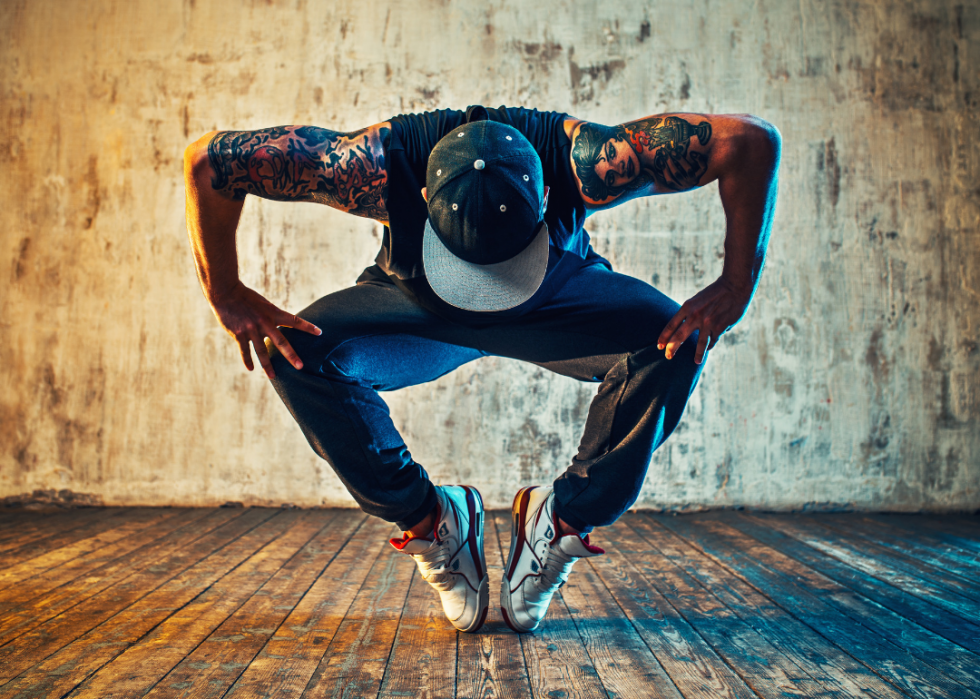
22 / l
Locking
Locking is some other pioneering early '70s funk dance move that was later adopted into the hip-hop trip the light fantastic genre. It entails transitioning from a rapid movement to a finish, which locks the body and and so transitioning back into the original motion at the same speed.
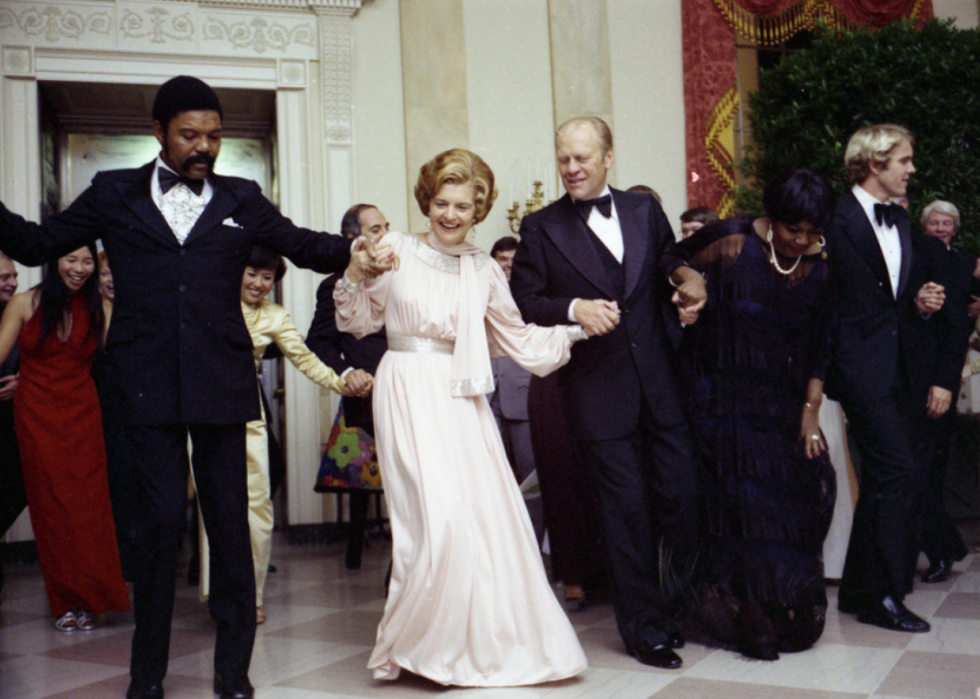
23 / l
The U.South. National Archives // Picryl
Hustle
Hustle evolved in the flamboyant music culture of New York City dance clubs in the mid-1970s. Designed to adapt to many kinds of pop music, hustle was a kind of and then-called touch dancing from the time of the Lindy Hop. The way received global attention when the defining disco flick "Saturday Dark Fever" featured hustle moves, which many hustle purists still insist were all wrong.

24 / fifty
Chris McHugh/Trick Photos // Getty
Disco dancing
The 1970s disco movement gave birth to a trip the light fantastic toe with roots in salsa, samba, swing, tango, cha-cha, Mambo, and foxtrot. Closely related to hustle, with one often considered being an offshoot of the other, disco dancing also became a global phenomenon with the release of "Saturday Night Fever."
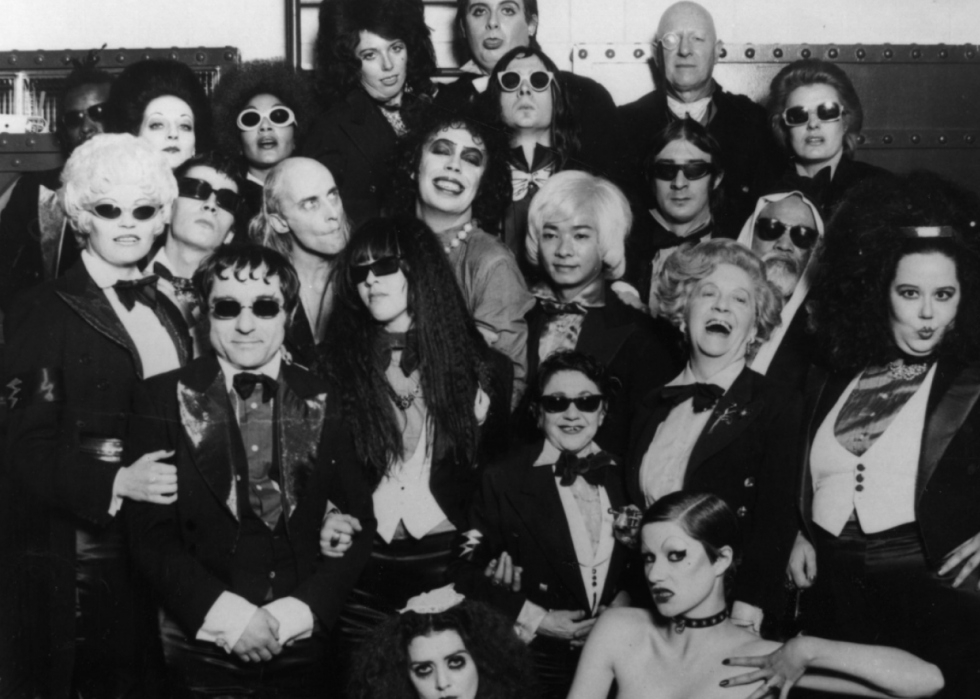
25 / 50
Evening Standard // Getty
The Fourth dimension Warp dance
By 1975, what began every bit a niche rock musical was a feature-length moving-picture show that had earned the admiration of an obsessively loyal cult following that continues to flock to theaters to encounter it in full costumes today. The Time Warp trip the light fantastic scene has long been a favorite part of "The Rocky Horror Picture Bear witness" experience since it encourages so much audition participation. The dance eventually left theaters and became a full-on fad.
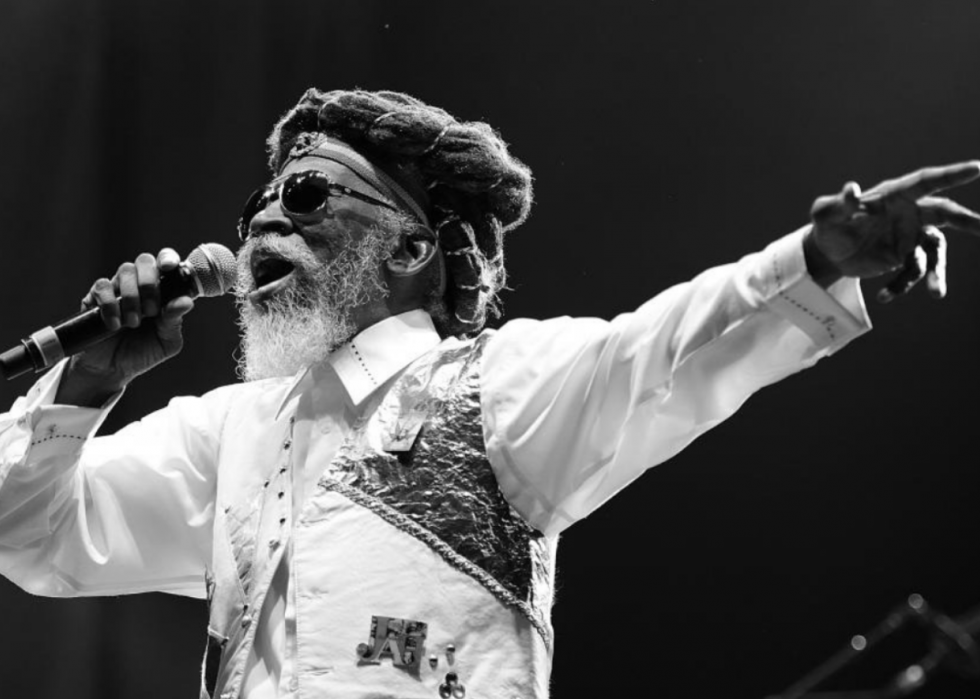
26 / fifty
Peter Verwimp // Wikimedia Commons
The Electrical Slide
The Electric Slide is 1 of the nigh famous MC-directed line dances in history. It all started in 1976 when Neville "Bunny Wailer" Livingston released a catchy song called "Electrical Boogie." After that same yr, a Broadway performer and choreographer named Richard "Ric" Silverish developed a 22-footstep trip the light fantastic toe routine based on the song, which became a simpler 18-step trip the light fantastic that came to be known as the Electrical Slide.
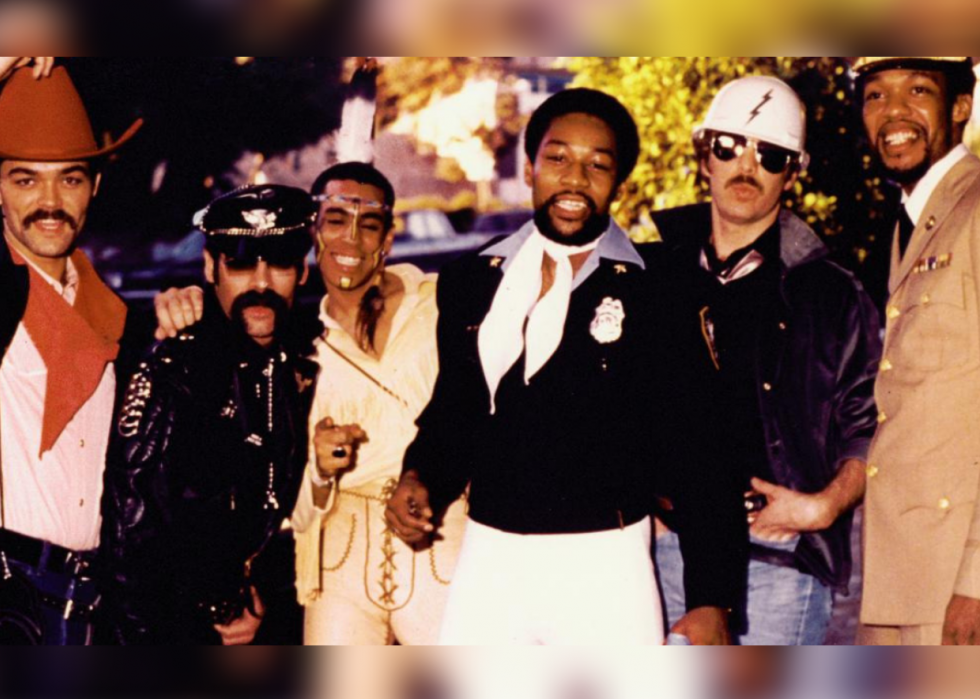
27 / l
Mario Casciano // Wikimedia Eatables
The Y.Chiliad.C.A.
In 1978, the Village People released the song "Y.Yard.C.A.," which—despite the fact that the group was non an all-gay troupe and the song'south lyrics did not overtly deal with homosexuality—became an anthem for gay pride. The dance associated with the song is one of the most famous and instantly recognizable in history and requires little more than 4 people using their arms to spell out the letters to a higher place their heads.
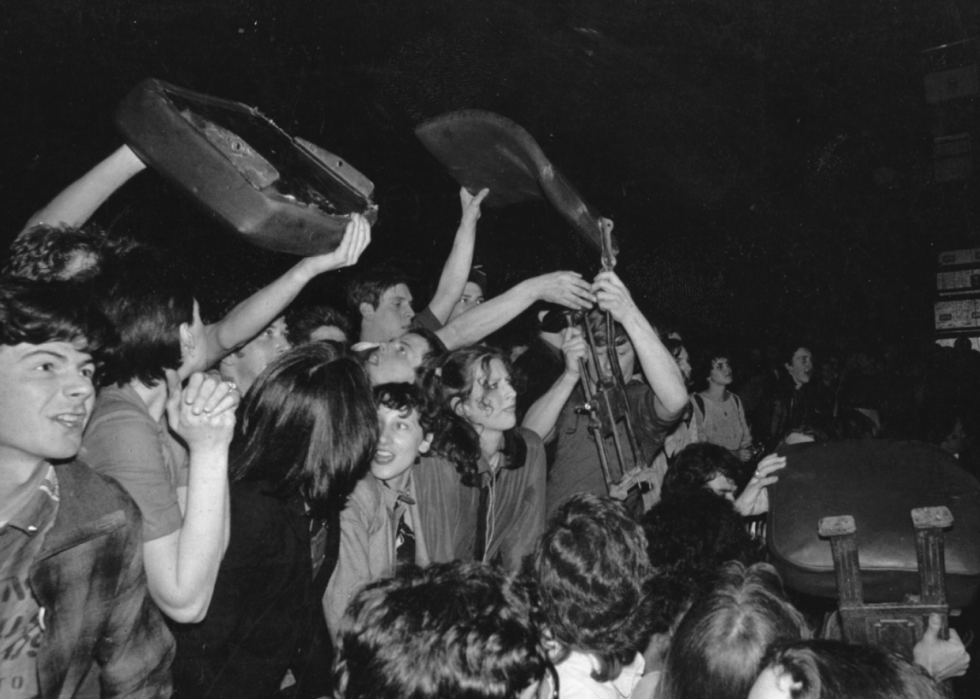
28 / 50
Chris Moorhouse/Evening Standard // Getty
Moshing
Offset emerging in the hardcore scene, moshing eventually made its fashion into thrash, metal, and punk concerts. More of an aggressive combat sport than a dance, moshing took place in mosh pits, which formed at the forepart of the show near the stage. Those who dare enter the pit and throw their bodies wildly at other raging audience members who, in turn, throw their bodies back. Proper etiquette was to requite a manus and assist upward anyone who fell or was injured before they got trampled.
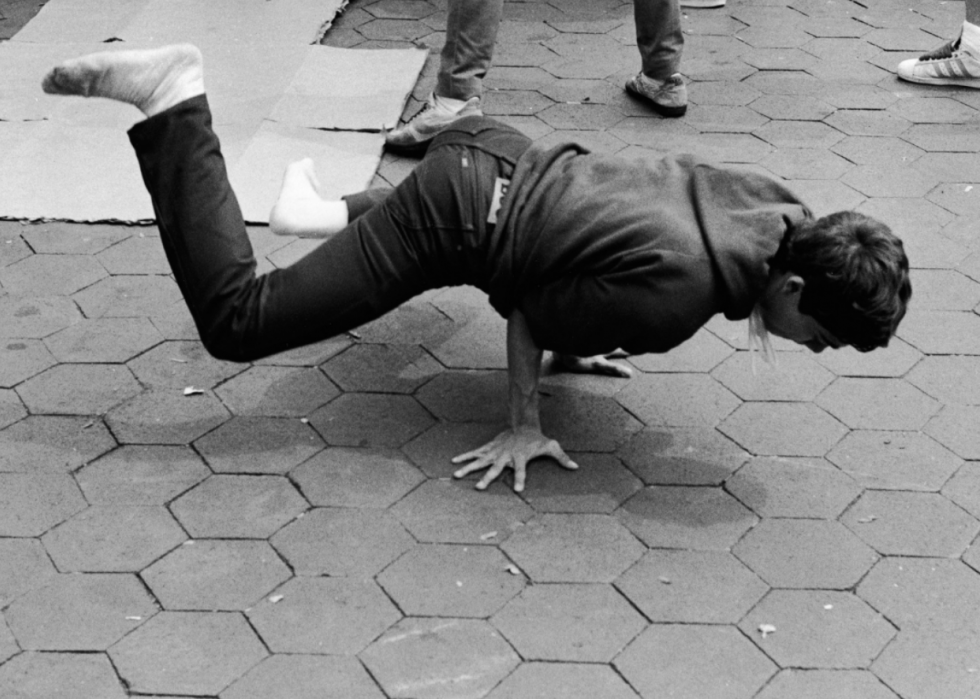
29 / l
Breakdancing
Hip-hop can be traced to the South Bronx in the 1970s when pioneering young DJs hosted massive, raucous dance parties. Using turntables as instruments, they played simply the instrumental breaks of each vocal to give the audience more fourth dimension to dance, which is where the term breakdancing comes from. The art striking the mainstream just as hip-hop did in the 1980s and became synonymous with wild, athletic, and acrobatic moves similar the headspin, jackhammer, and windmill.
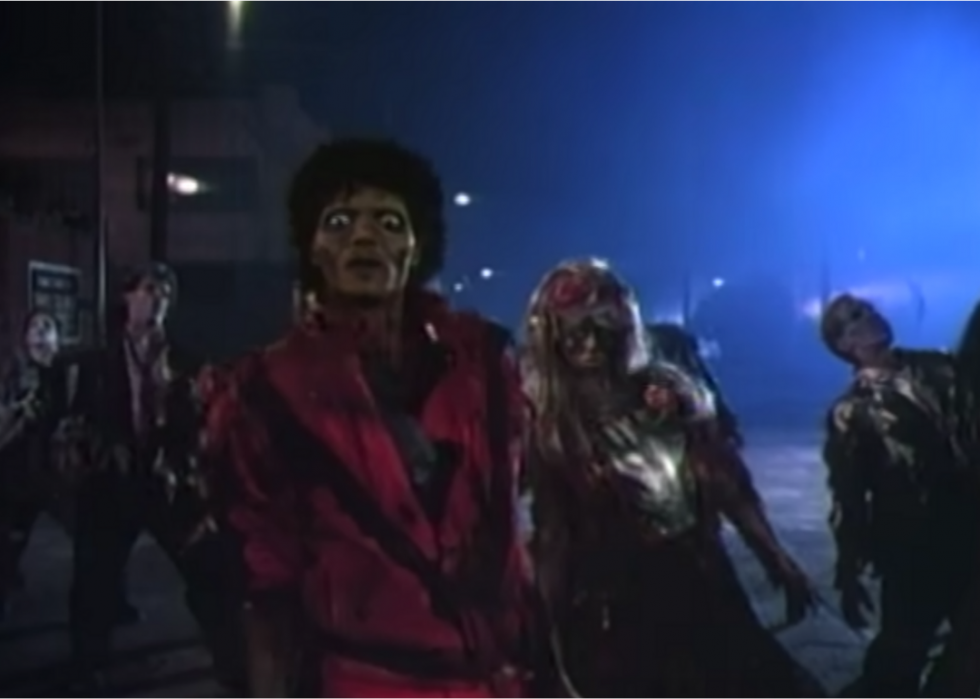
30 / 50
The Thriller
In 1983, Michael Jackson unveiled the near celebrated music video in history, "Thriller," which was also the name of his hit song as well as the blockbuster album on which the hit song appeared. More of a mini-movie, "Thriller" featured Jackson, along with his on-screen girlfriend, wearing his trademark red-and-black leather jacket while navigating an urban jungle crawling with bloodthirsty zombies. Those zombies, which eventually enlist Jackson into their ranks, performed a dance that would chop-chop sweep America and remain a major office of popular culture and internet civilization to this day.

31 / 50
OSTILL is Franck Camhi // Shutterstock
The Moonwalk
Michael Jackson introduced the earth to the Moonwalk during his 1983 appearance on "Motown 25," but a much earlier groundbreaking African American performer is credited with inventing the gravity-defying, backward slide. To cap off a stunning operation, tap dancer Beak Bailey moonwalked off the stage in 1955 at the Apollo Theater in Harlem.
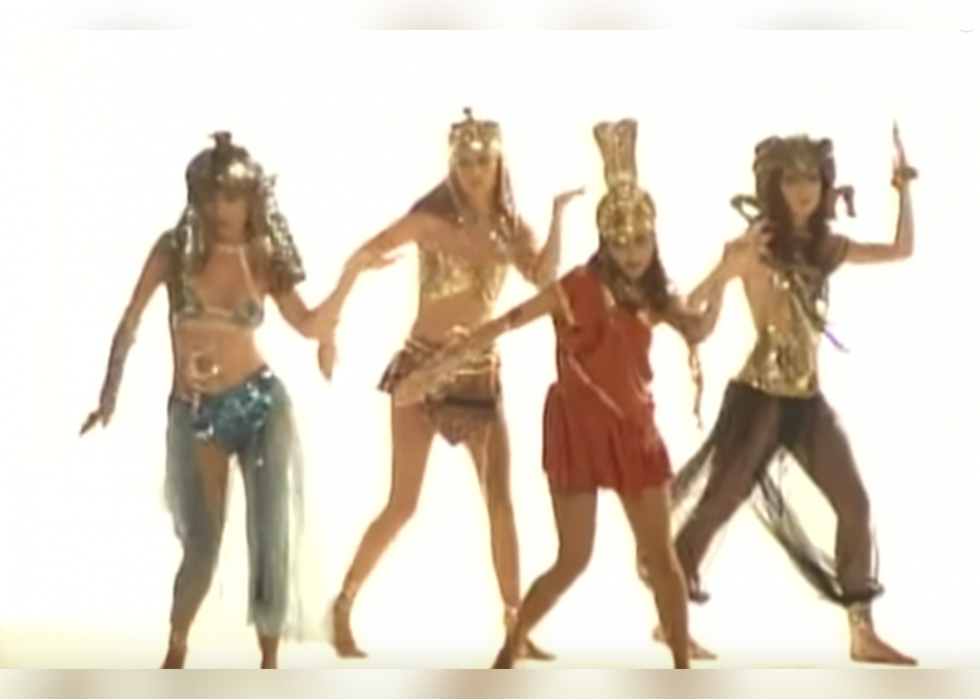
32 / 50
Walk Similar an Egyptian
The Bangles released "Walk Similar an Egyptian" in 1986, and the video soon spawned ane of the biggest dance fads of the mid-1980s. The trip the light fantastic was easy enough to pull off and included a Y.Thousand.C.A.-reminiscent hands-above-head movement, palms together, with the dancer'due south head bobbing side-to-side in between—merely as the Egyptian pharaohs of old did, or perhaps might have done.
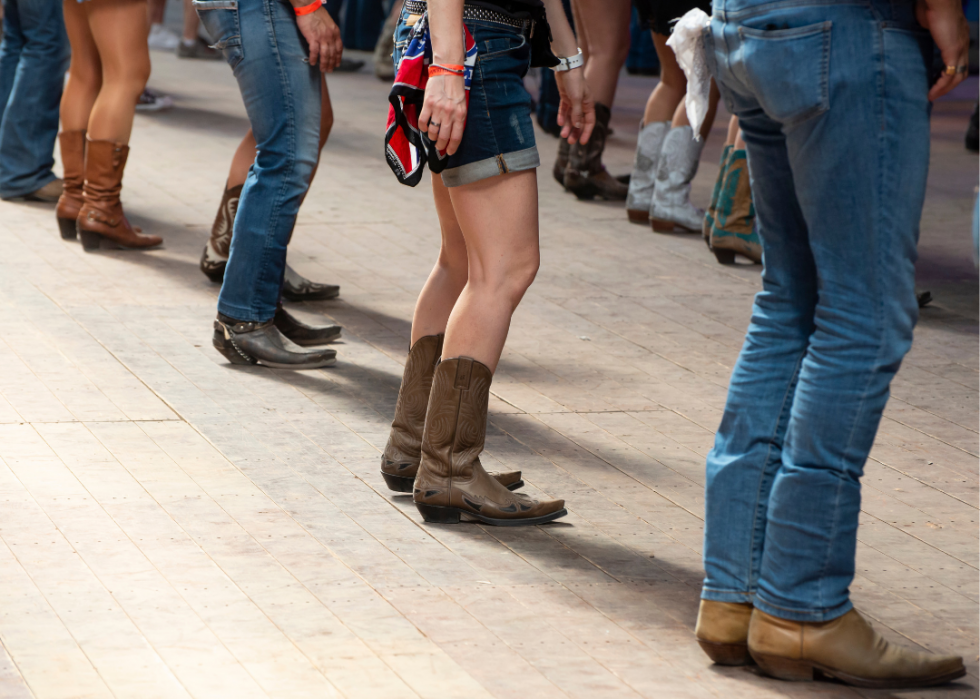
33 / 50
Paramount Pictures // IMDb
Country line dancing
Although line dances with country flair engagement back to the 1950s, the 1980 John Travolta picture "Urban Cowboy" put a spotlight on country line dancing, which, as the proper noun implies, involves people arranged in a line while dancing to state-Western music. The dance became a phenomenon, however, a decade later in 1992 with Billy Ray Cyrus' smash hitting "Achy Breaky Heart."
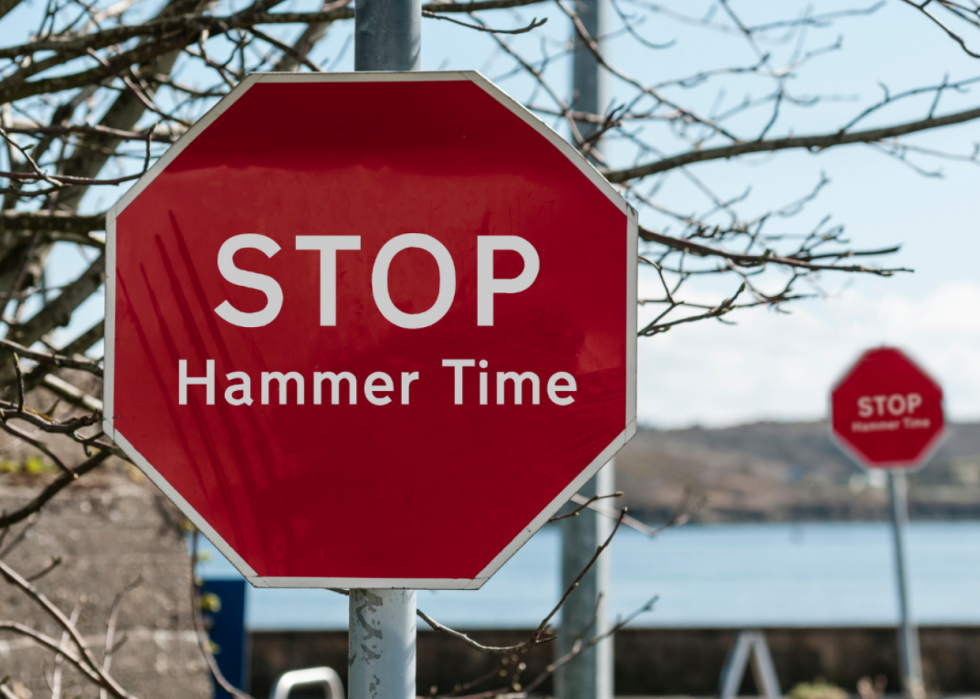
34 / 50
Stephen Barnes // Shutterstock
The Running Human dance
Hip-hop trip the light fantastic toe music in the late 1980s and early on 1990s was dominated past a uncomplicated, but explosive trip the light fantastic known as the Running Human being. Popularized by acts like Bobby Dark-brown, MC Hammer, Milli Vanilli, and Vanilla Water ice, the trip the light fantastic required fast music, lots of energy, plenty of space, and, if at all possible, parachute pants.
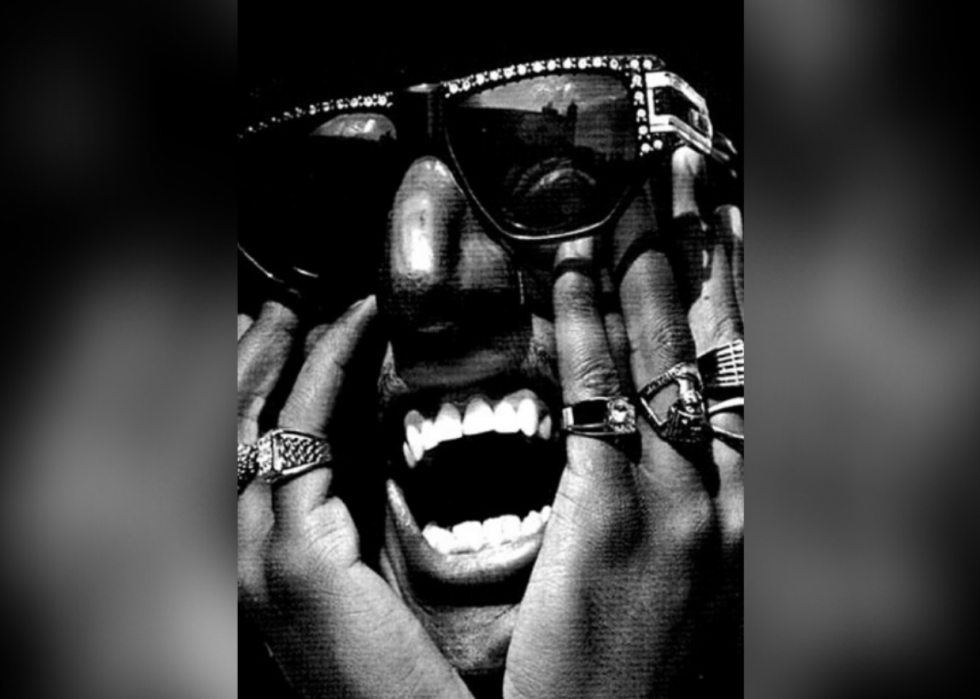
35 / fifty
The Humpty trip the light fantastic toe
"The Humpty Trip the light fantastic," showtime released in 1990, is consistently rated as one of the greatest music videos of all time. Featuring a young Tupac Shakur in the groundwork, the song and dance were performed by the Digital Undercover featuring Humpty Hump, an alter-ego of artist Shock G. Both the song and the dance are intentionally featherbrained and low-cal, which earned the group praise for creating a fun, goofy, dance-for-the-sake-of-dancing fad.
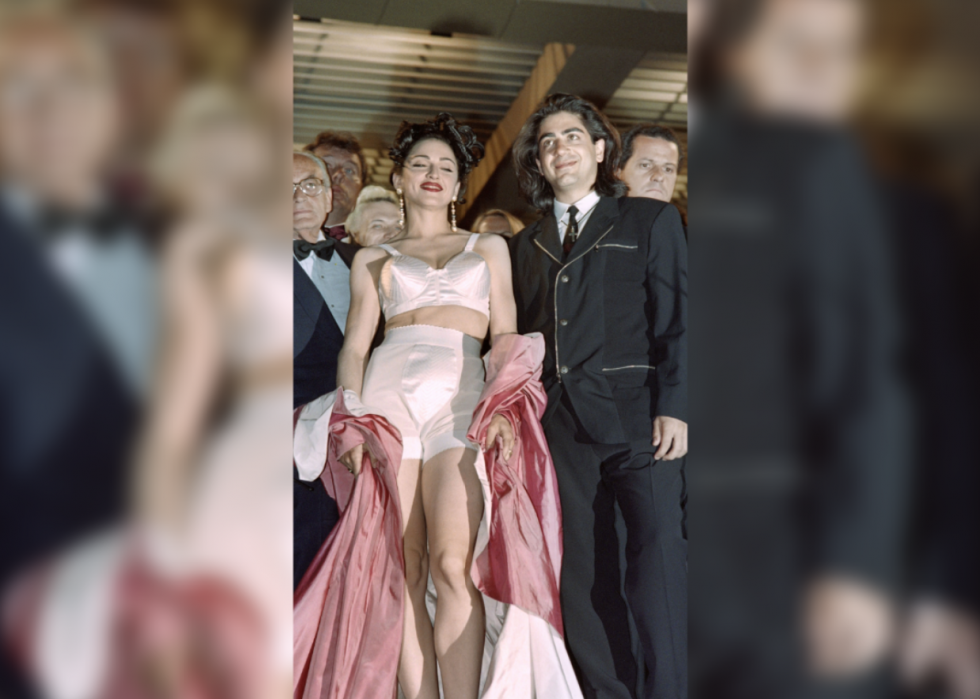
36 / 50
GERARD JULIEN/AFP // Getty
Voguing
The Spectator once called voguing "a giddy mass of flying limbs, sashaying hips, and pouty faces." Long a staple of New York City's underground drag balls, voguing competitions and pageants defenseless the eye of major pop stars like David Byrne and Madonna, who began attending them out of curiosity in the 1980s. Mainstream America, however, was introduced to the highly stylized dance class in 1990 when Madonna turned the movement into a worldwide phenomenon subsequently releasing a song called "Vogue," as well every bit a music video that put the art on display.
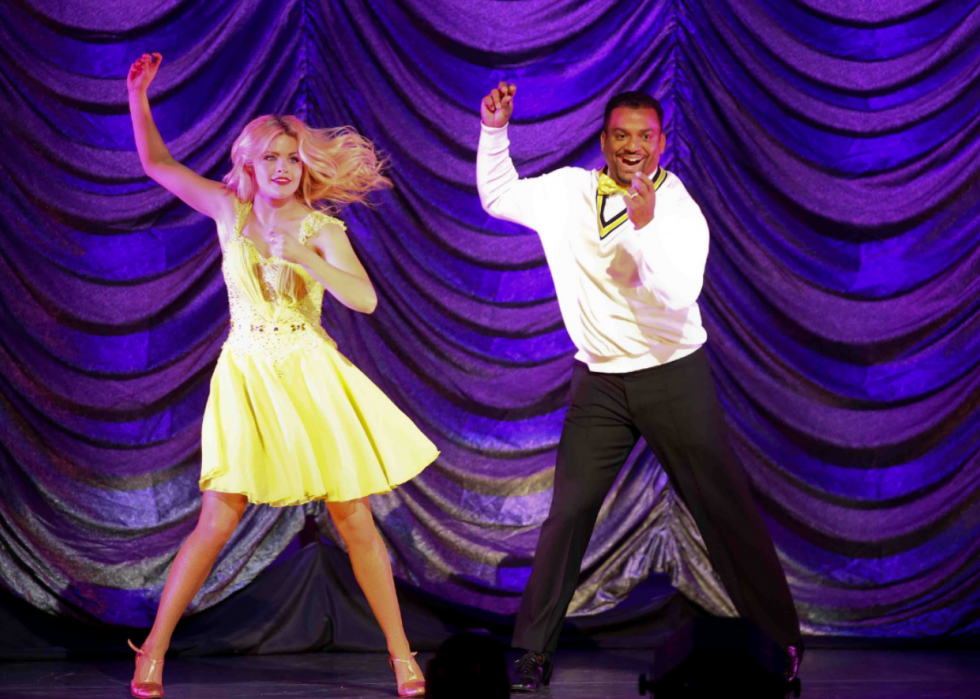
37 / l
Debbie Wong // Shutterstock
The Carlton trip the light fantastic toe
Histrion Alfonso Ribeiro played the uptight and nerdy Carlton on the hit '90s comedy "The Fresh Prince of Bel-Air." His intentionally bad, wildly flailing trademark dance, which he debuted on the show while moving to "It's Non Unusual," became a massive fad that imitators tried to make all their ain. It eventually led to Ribeiro winning "Dancing With the Stars" in 2019, notwithstanding, Ribeiro lost a lawsuit in which he sought to have the dance copyrighted.
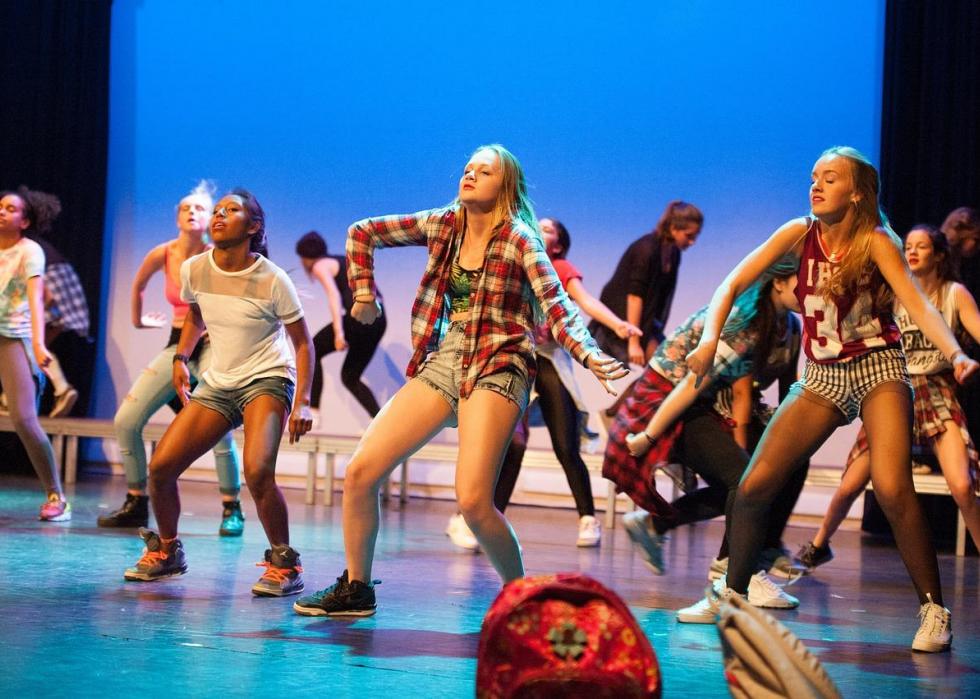
38 / l
Jacking
"Jacking" is a simple, freestyle dance move built-in out of stone 'n' roll in the late '80s. The dance, which was inspired too past the liberated motions of disco, is done by the dancer undulating his or her torso back and along.
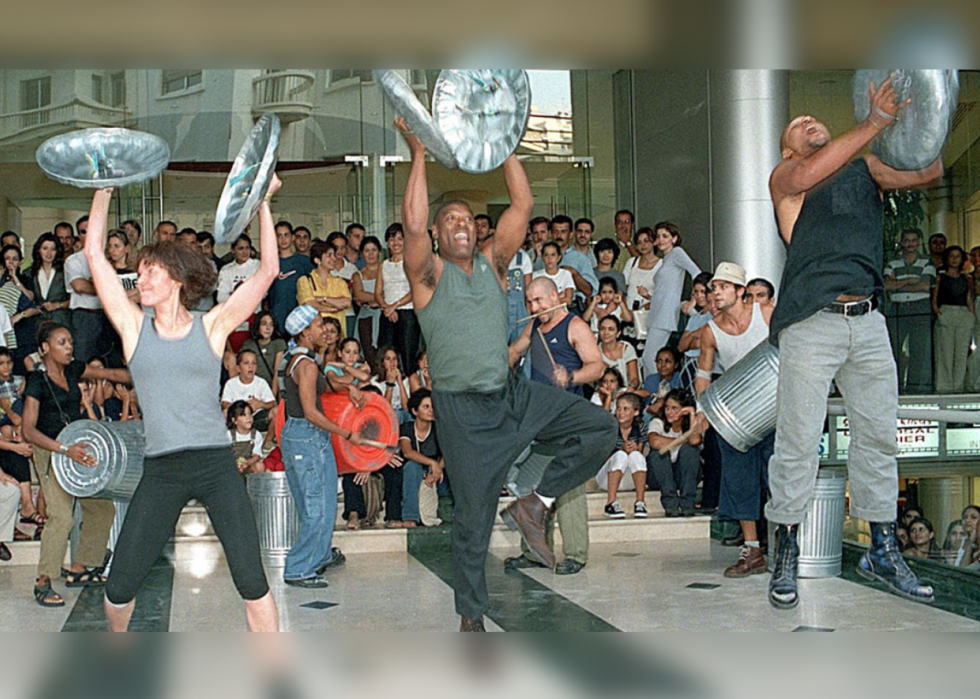
39 / 50
OUSAMA AYOUB/AFP // Getty
Stepping
Many Americans were offset introduced to the art of stepping when the dance was repeatedly featured in "A Unlike Globe," a spin-off of "The Cosby Show," 30 years ago. "S.T.O.M.P." became the first nationally syndicated stepping contest in 1992 and the trip the light fantastic toe was function of Opening Ceremonies of the 1996 Summer Olympics in Atlanta. Today, the dance—which incorporates break dancing, tap dancing, and gymnastics while using the torso to brand sounds through acts like clapping and stomping—was the bailiwick of a 2017 documentary called "Pace."
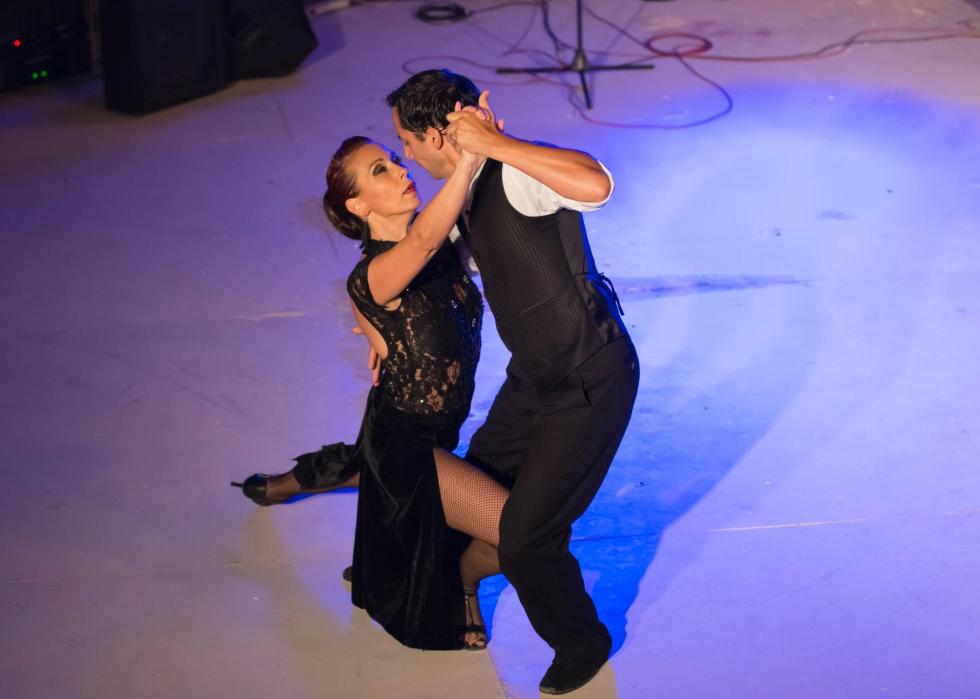
40 / 50
Salsa
Salsa seems today like a timeless dance, however it gained serious popularity in the mid-1970s in New York. The dance's movements originated in Cuban folk dances and include overtones of Afro-Cuban dances such as the Mambo, Ruma, Danzón, and Son. Salsaing invokes a number of Latin musical genres, well-nigh notably trip the light fantastic toe music from Cuba.
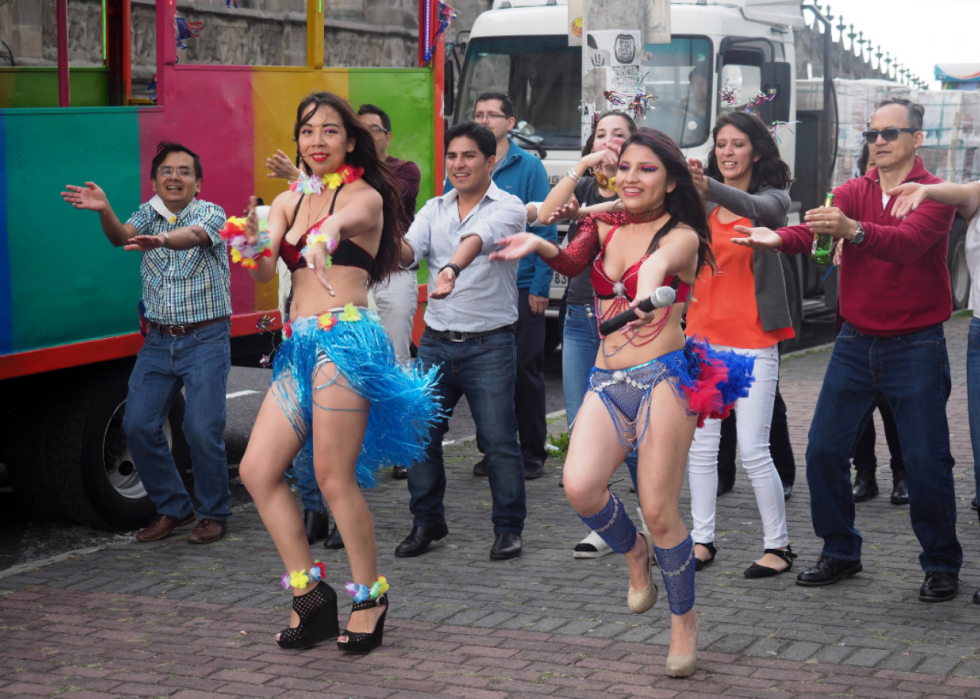
41 / 50
Vladislav T. Jirousek // Shutterstock
The Macarena
If you were alive and aware in 1993, information technology is unlikely that you went the whole yr without hearing the song "Macarena." From individual parties and shopping malls to stadium games and corporate events, the Los Del Rio vocal was everywhere—and and then was the highly choreographed dance that the group taught to the world through their much-watched music video. The song was one of the greatest i-hit wonders of all fourth dimension, and the associated dance fad volition be remembered equally among the almost dominant cultural phenomenons of the era.
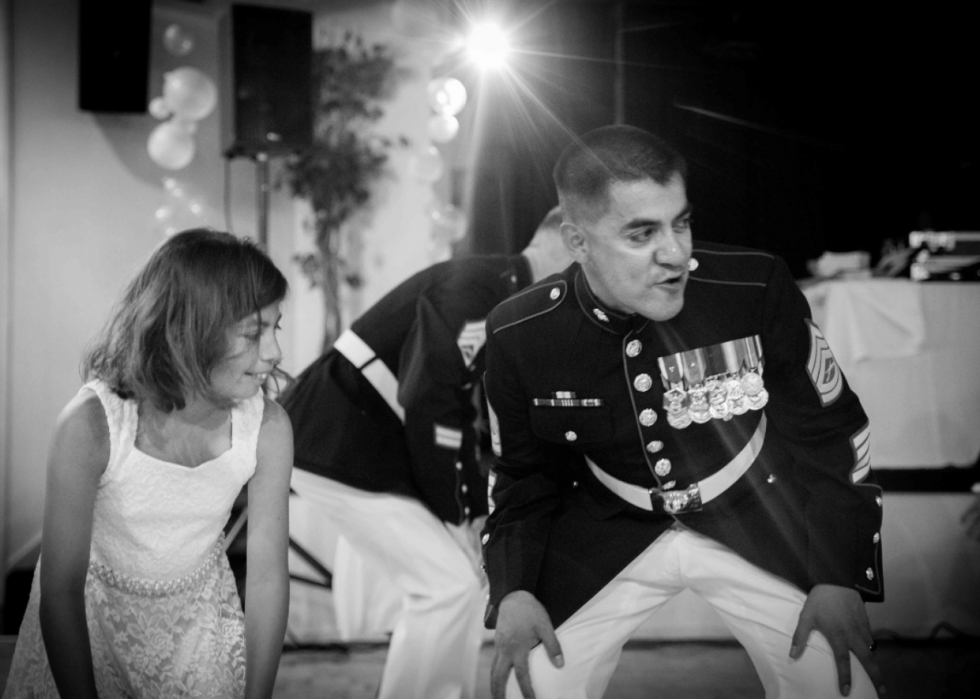
42 / 50
Cpl. Brittney Vito // Wikimedia Commons
Cha-Cha Slide
If you lot attended a hymeneals in the 21st century, chances are adept you lot heard "Cha-Cha Slide" past DJ Casper—and perhaps even attempted to perform the dance. The dance-song genre track, which dedicates much of its lyrics to describing the dance moves, was originally intended for nightclubs and dance parties when it was first released in 2000. It has since, however, become a mainstay at not only weddings, merely at altogether parties, bar mitzvahs, workout classes, and proms.
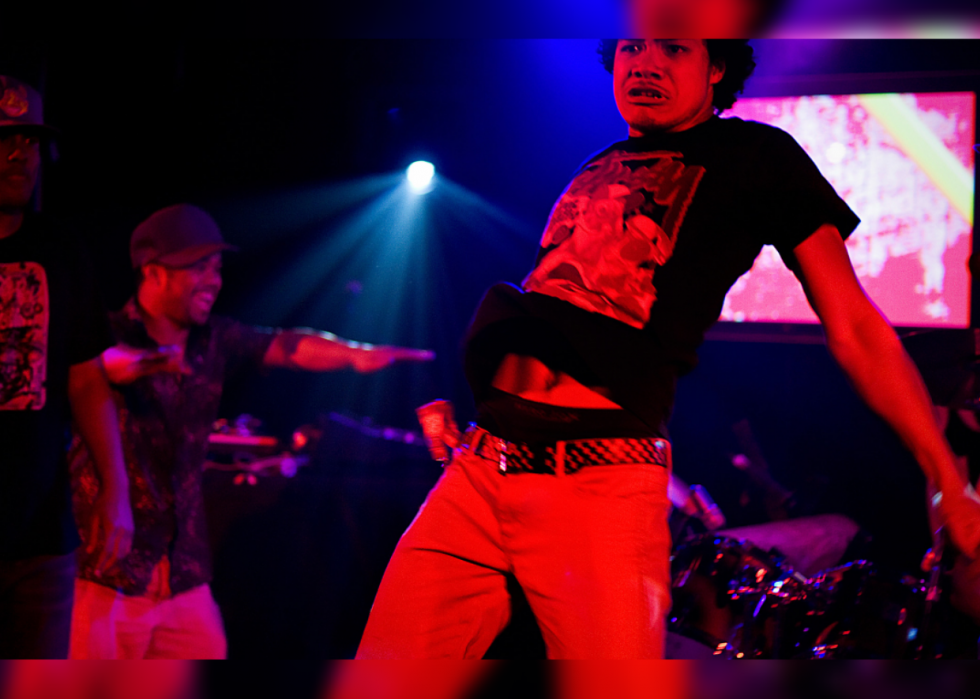
43 / 50
Andrew Braithwaite // Wikimedia Commons
Krumping
Ceasare "Tight Eyez" Willis and Jo'Artis "Large Mijo" Ratti are credited with creating krumping in South Central L.A. in the early 2000s. Known for its fast stylings, intensity, and sharp body movements, the style is loosely based on a slightly softer version of a similar dance chosen clowning, which came out of Compton in the early 1990s. Both Ratti and Willis were clown dancers, but developed krumping as a more raw-edged and aggressive alternative.
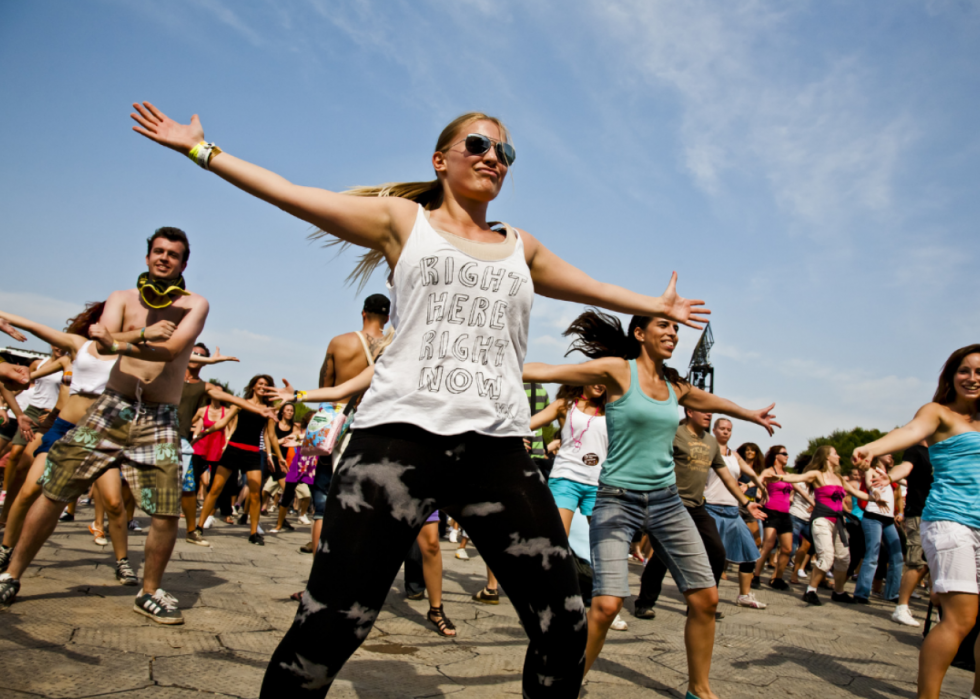
44 / l
Wink mobs
In the digital historic period, social media gave big groups of people the means to coordinate and perform massive and seemingly spontaneous choreographed dances. Around the globe, the flash mob craze delighted and shocked tourists, worried law enforcement, and made headlines. Among the nearly celebrated flash mobs ever involved significant women breakdancing, 100 women dancing at Piccadilly Circus in London, and nearly 14,000 people dancing the Thriller in Mexico.
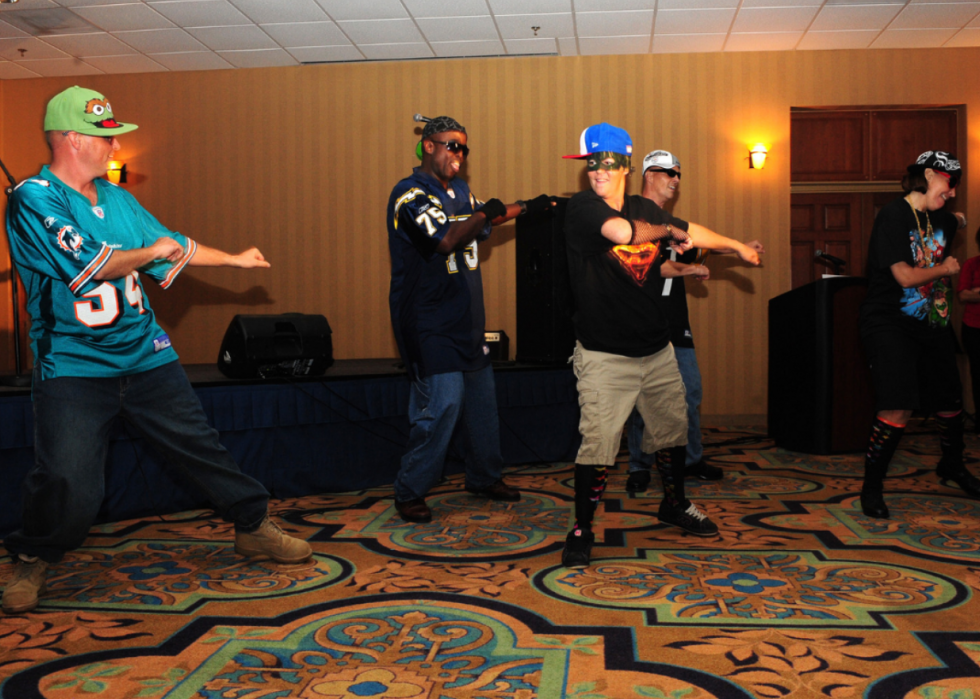
45 / 50
Airman 1st Grade Timothy D. Moore // U.S. Air Force
Crank That
In 2006, Soulja Boy released his debut unmarried. Chosen "Creepo That," the song created the biggest dance fad since the Macarena more than a decade earlier, scoring tens of millions of views. Fun and piece of cake to learn, the semi-instructional dance-song hitting soon had people of all nationalities, ages, and genders doing the Superman pose and cranking their hands like they were on motorcycles.
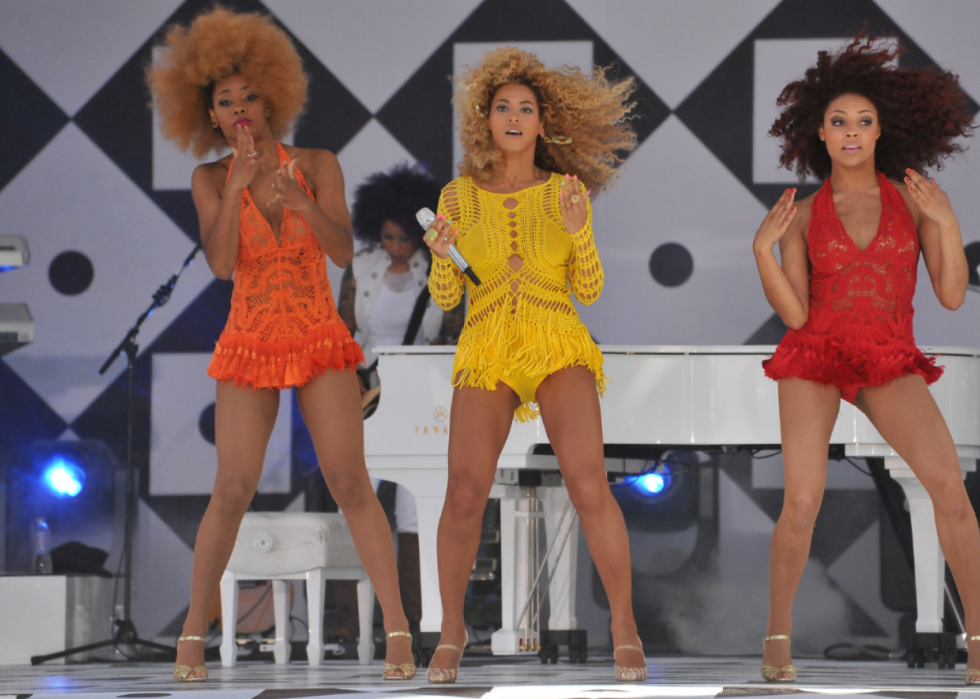
46 / 50
Asterio Tecson // Wikimedia Commons
Single Ladies
In 2008, Beyonce released "Unmarried Ladies," which would become i of the best-selling singles and nearly-watched music videos of all time. Based on a performance from "The Ed Sullivan Evidence" in 1969, the trip the light fantastic that accompanied the song would go onto go one of the most iconic of the decade. It spawned a movement more than a fad—the dance remains a staple of dance contests, fitness classes, and barrooms, thanks to the dance'due south intentionally simple hand gestures and circular strut-walking.
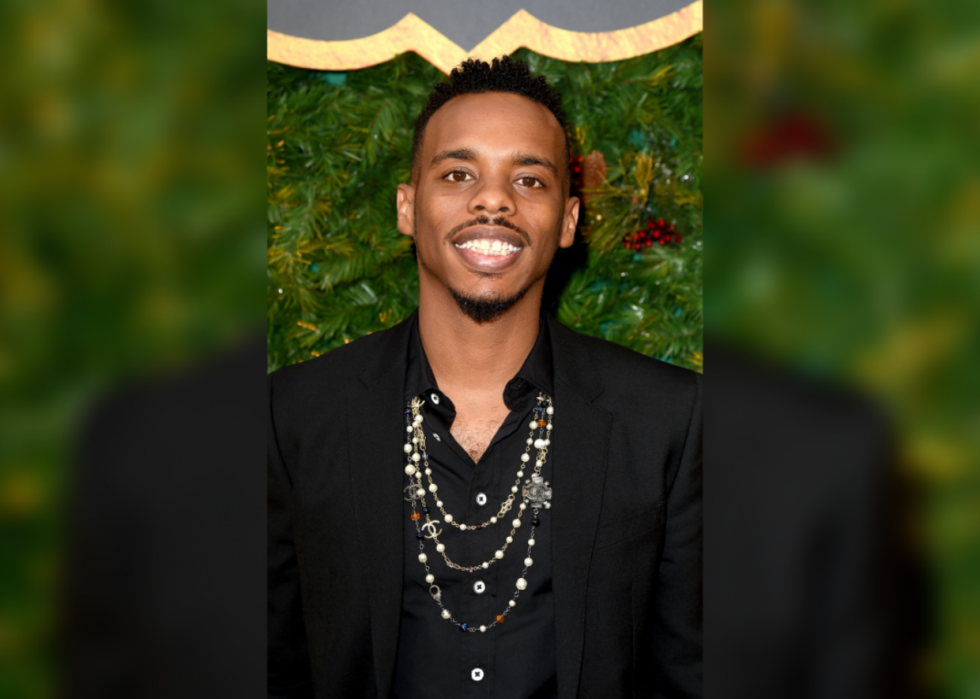
47 / 50
Memphis Jookin
Originally developed in the 1990s in the West Tennessee city that bears its proper noun, Memphis Jookin is an updated version of an before line dance known as the gangsta walk. The art form, which borrows from ballet and is known for its elaborate footwork, had all but disappeared past the plough of the millennium but saw a major resurgence in the 2010s. It is the trademark dance of acts like Thou-Nerd, Lil Black, LaShonte, Dr. Rico, N.Dot, and nearly notably, Lil Buck.

48 / 50
Gangnam Mode
In 2012, a viral video of a Korean pop star named PSY performing a song and dance called "Gangnam Style" roared across the world and became the showtime video in history to become one billion views on YouTube. The video influenced popular culture around the earth, and the dance became a sensation that was parodied and lampooned as oftentimes as it was imitated. World leaders like Barack Obama and David Cameron would eventually be seen performing the Gangnam Manner dance.
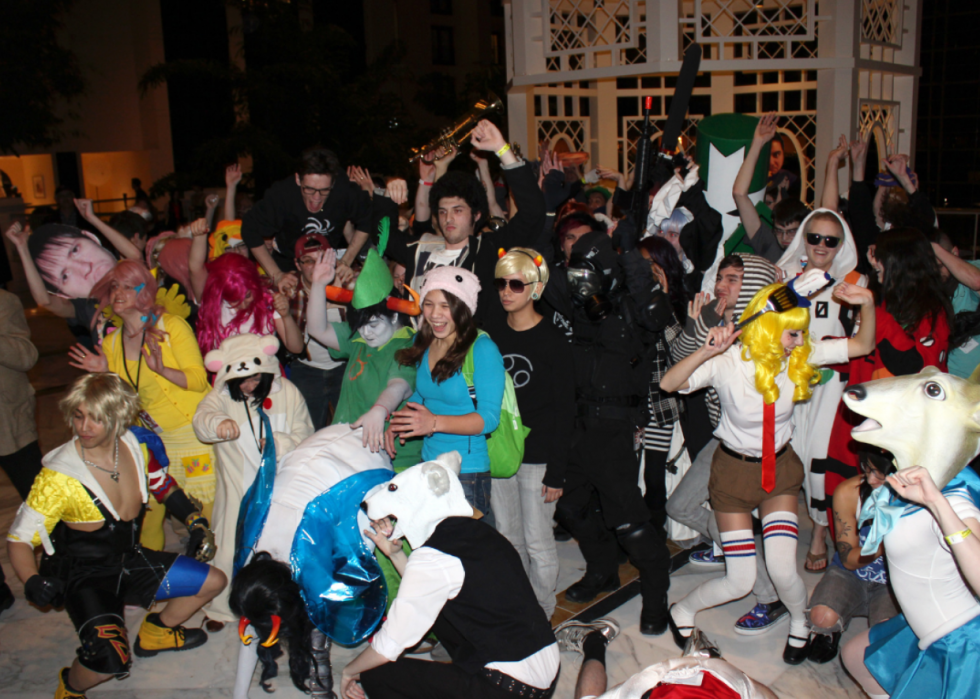
49 / fifty
greyloch // Wikimedia Eatables
The Harlem Shake
At the viral video trip the light fantastic toe awareness'south meridian in February 2013, more than 4,000 variations, iterations, and parodies of "The Harlem Shake" were being uploaded to YouTube every single twenty-four hours. The massive hit from Baauer brought the trip the light fantastic back into the spotlight, simply the Harlem Shake actually has a history dating to a street dancer named Al B, who performed his original version on basketball courts in Harlem in the early 1980s.
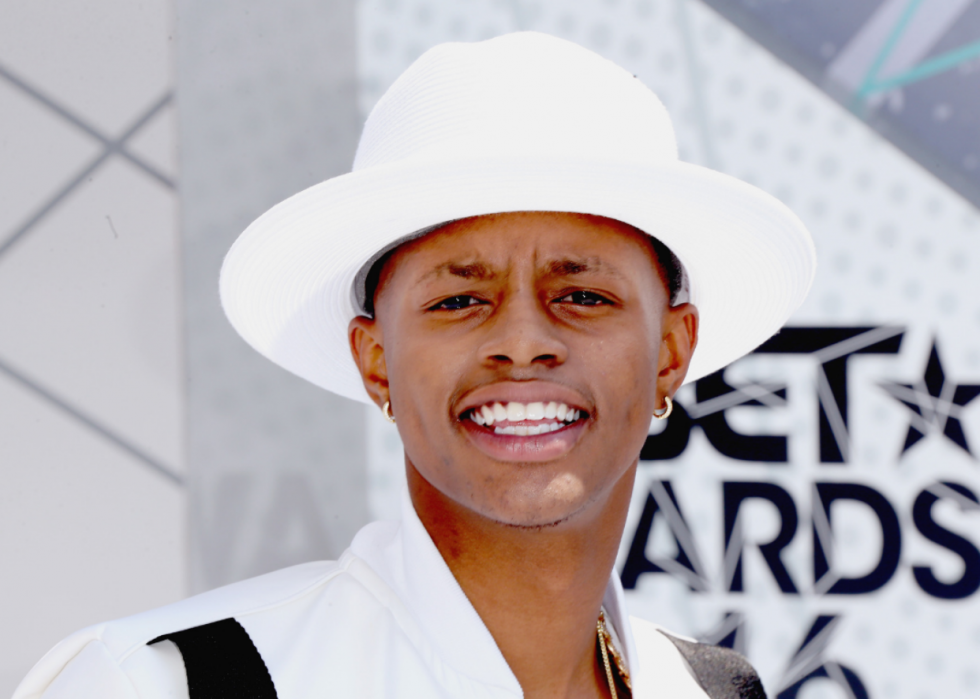
50 / 50
Frederick M. Brown // Getty
The Whip and Nae Nae
The 2015 Silentó music video "Sentry Me" brought the Whip and the Nae Nae into public consciousness. The two moves, frequently done in tandem, were developed in Atlanta several years before. When the video dropped, however, the craze spread far across Georgia and people everywhere started doing the hip-hop moves, which involved shoulder-to-shoulder swaying with one arm upward (the nae nae), that eventually comes whipping down (the whip).
Trending At present
© Stacker 2022. All rights reserved.
Source: https://stacker.com/stories/2877/50-famous-dance-fads-last-100-years
Posted by: pullumthempling.blogspot.com

0 Response to "How Has Dance Changed In The New Millennium"
Post a Comment